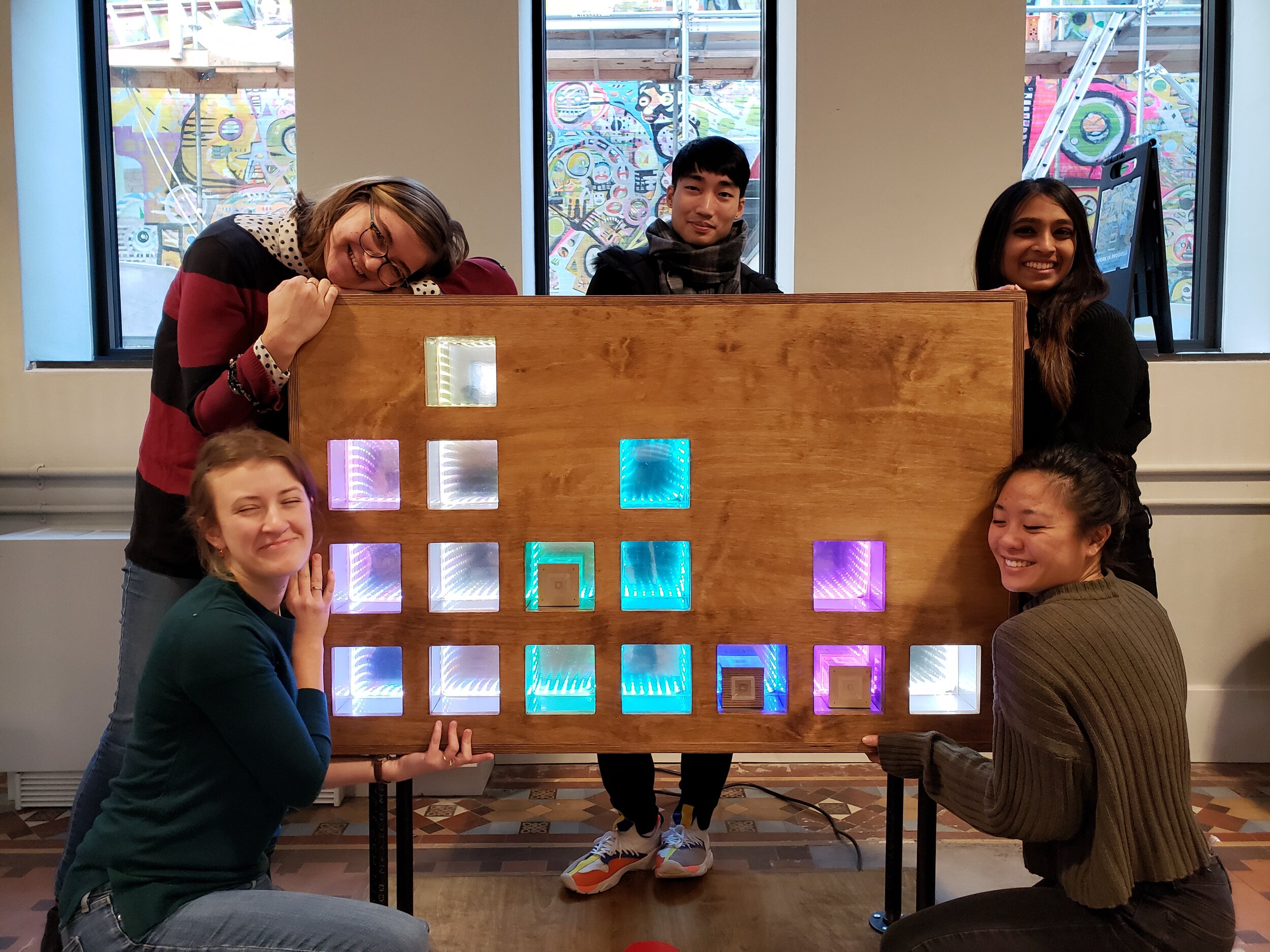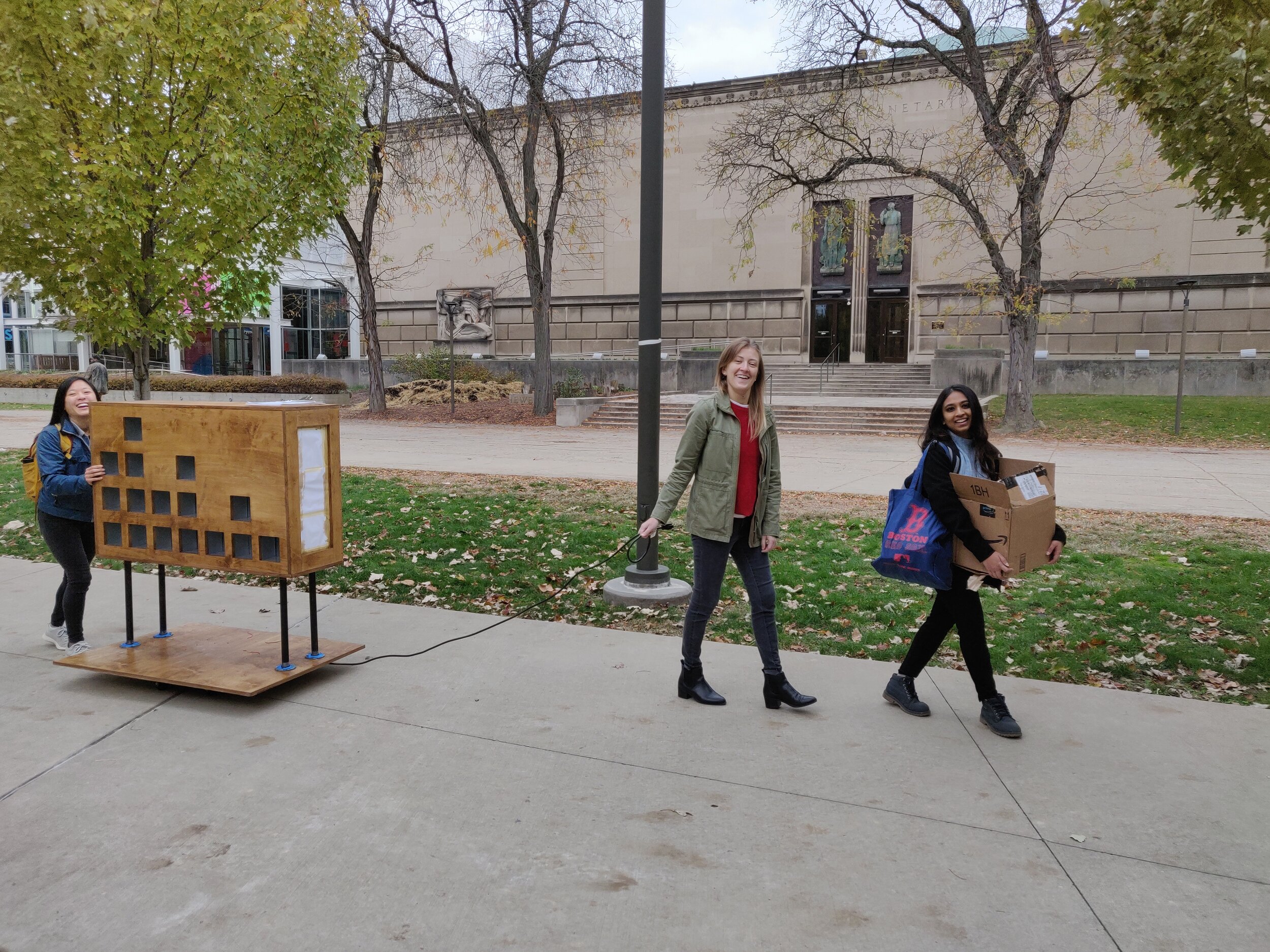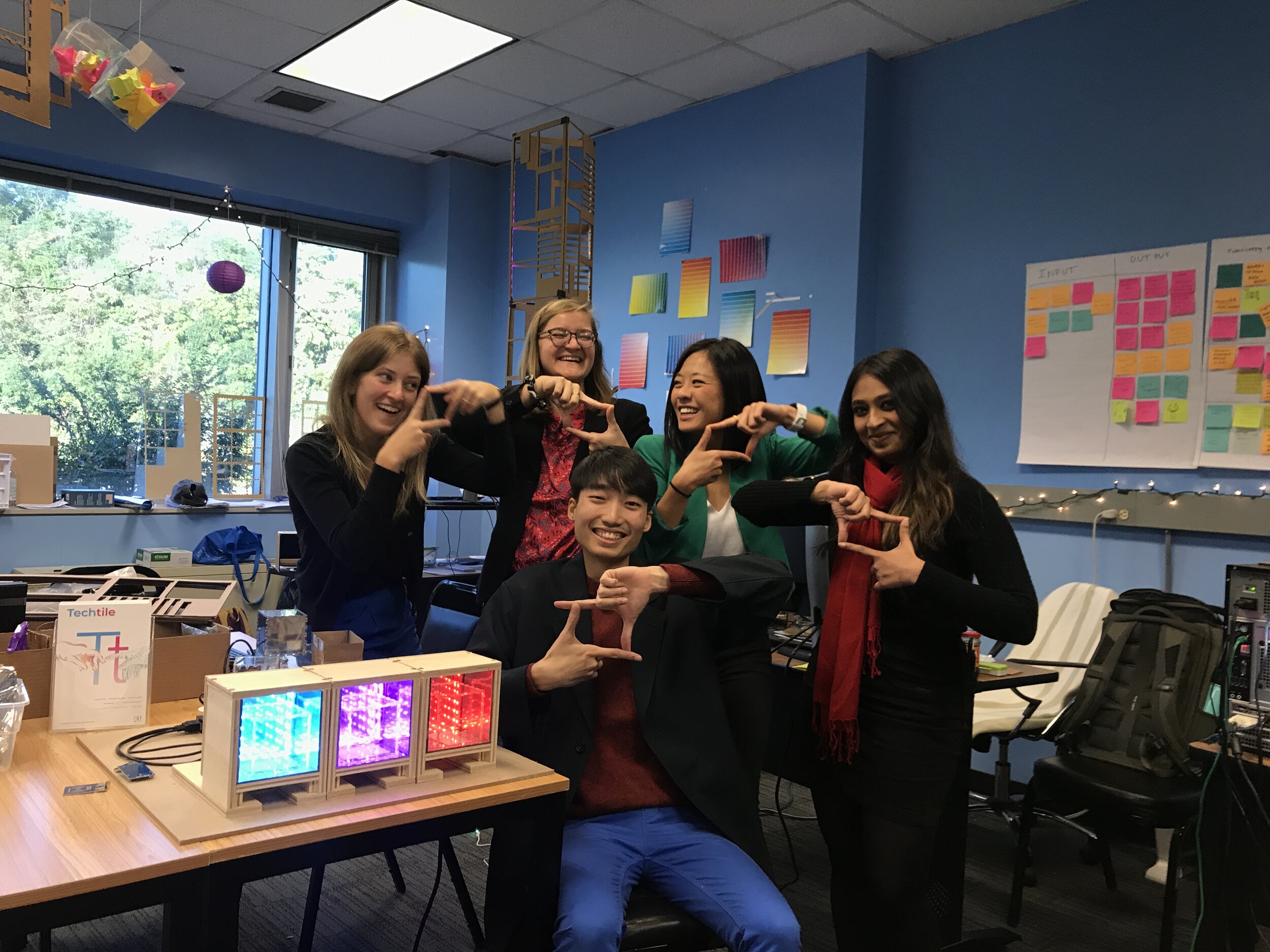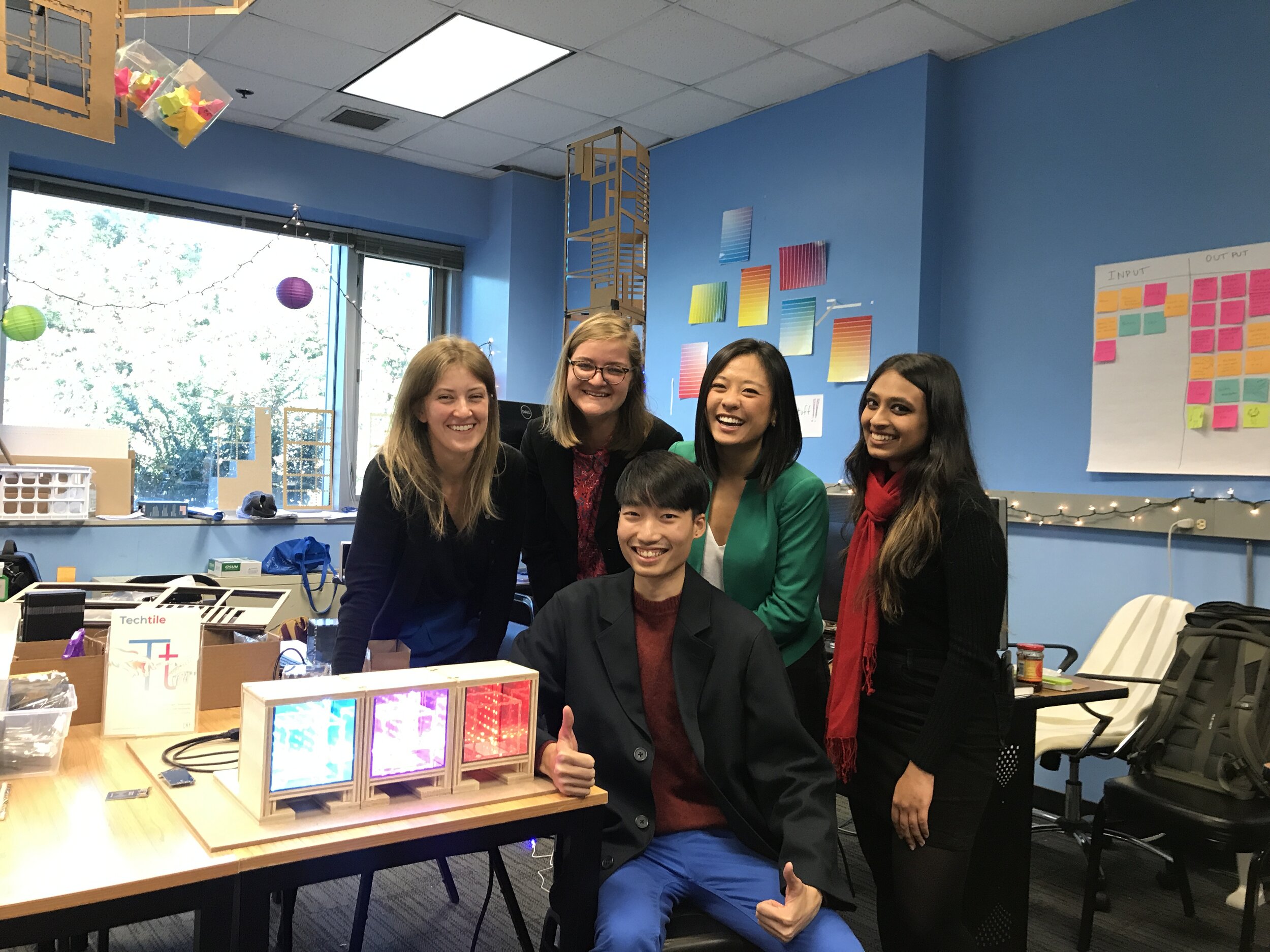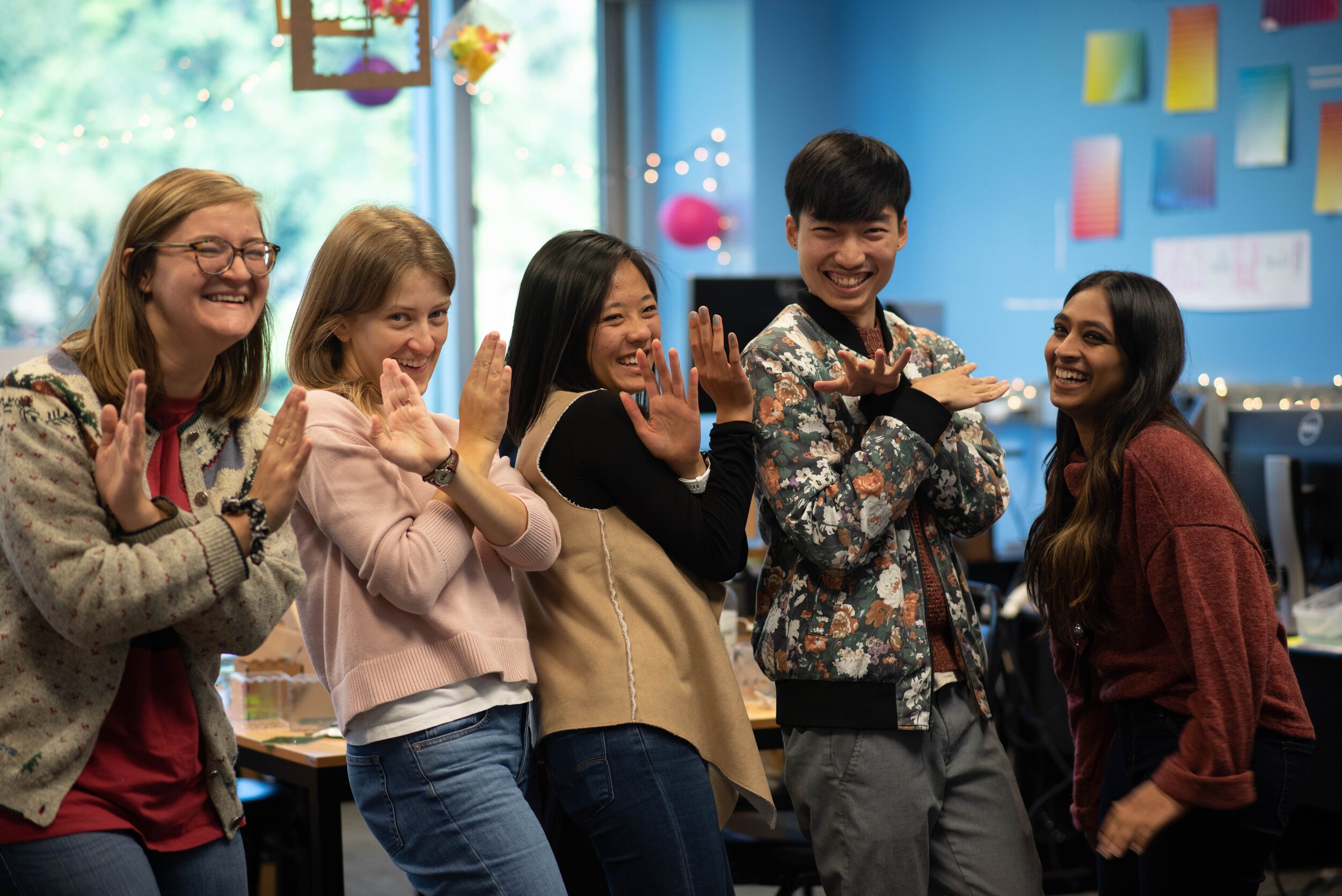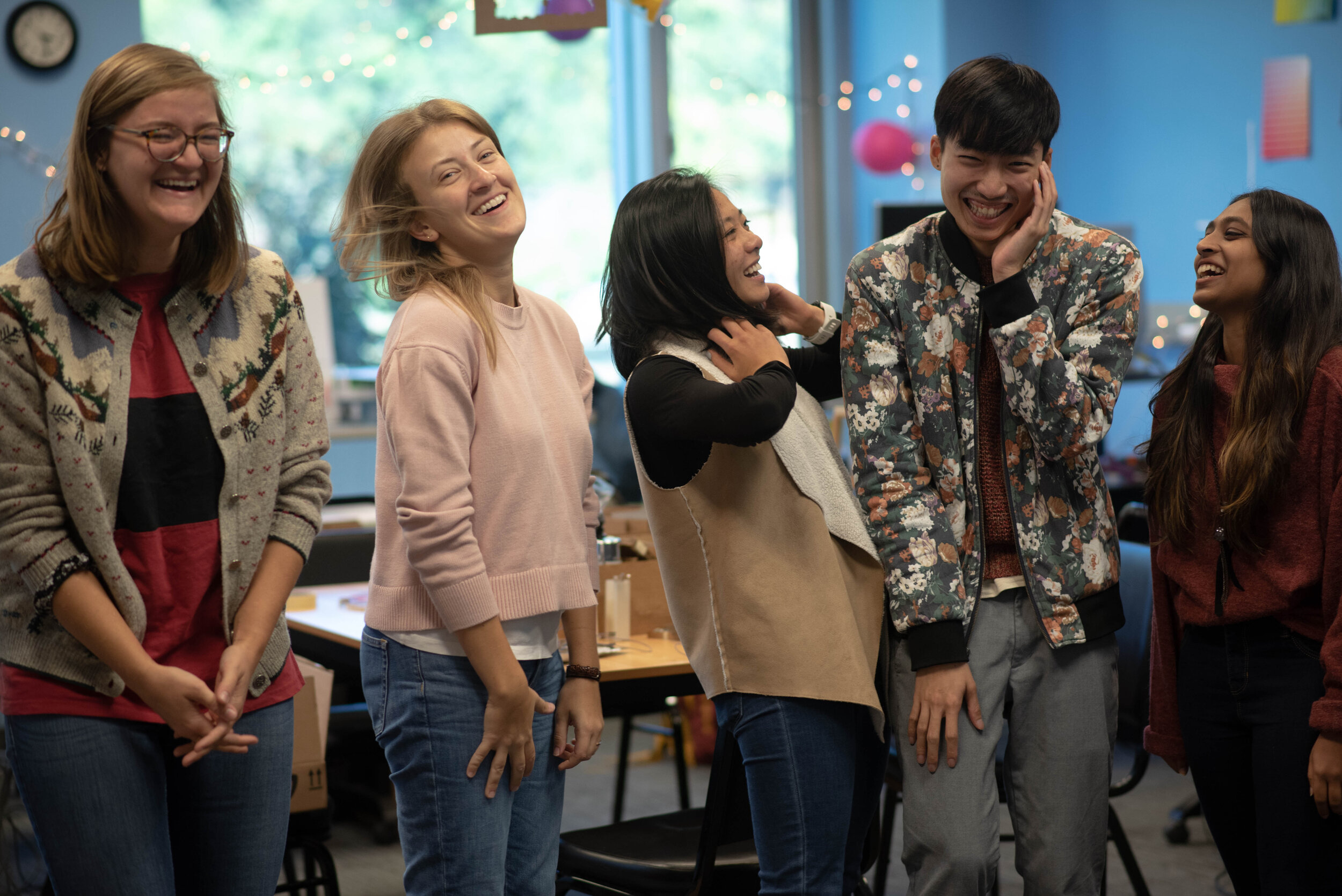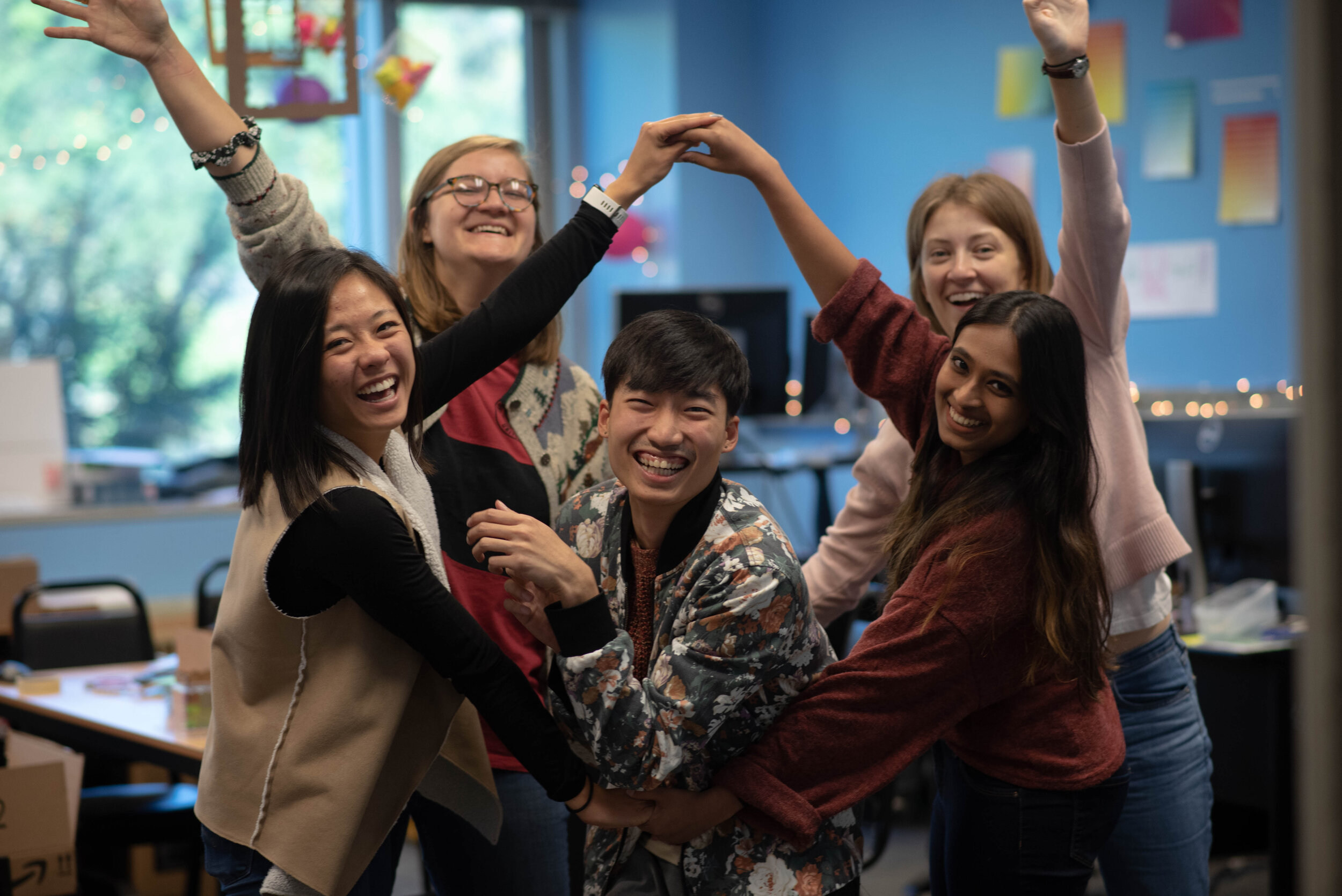TechTile
Client: MuseumLab + Entertainment Technology Center
Goal: Design and implement an interactive experience that merges technology with tactile play.
Demographic: 8-10 year olds.
Team: Daryl Choa (Co-Producer + Experience Designer), Marissa Doerger (Artist + Fabricator), Emily Kovalik (Producer), Weizheng Lee (Creative Technologist), Nidhi Ramanathan (Creative Technologist).
Platform: Arduinos, RFID readers + tags, LED lights, custom fabricated installation and blocks.
Project Summary: The Children’s Museum of Pittsburgh has expanded with the opening of MuseumLab, a new makerspace for children ages 10 and up. In collaboration with the IDeATe program and the Master’s of Arts Management program at CMU, the ETC has a space within the MuseumLab for future projects that inspire the makers of tomorrow. Our team designed an interactive experience that merges technology with tactile play. Our interactive installation piece combines together the Children Museum’s philosophy of “playing with real stuff” and the ETC’s philosophy of “learn, work, and play.” Using the central theme of play, and working with the middle school students in the space, our installation fosters curiosity in technology through tangible interactions.
Our installation is a free-standing interactive wall with 16 modules. Each module consists of a cubby with LED lights that respond to guest interactions. We settled on an RGB color mixing logic for the installation. Cubbies use this logic to govern how blocks alter the LED lights. For example, if a guest places a red block within a cubby, it turns red. When it is replaced with a blue block, the cubby will additively mix the colors resulting in magenta. The installation is run on Arduino microcontroller boards with RFID readers for detecting input and RGBW LEDs for output.
Contributions
Developed original concept pitch, assembled team, and advisors
Conducted user research through running early playtest to explore workshops and interviewing subject matter experts
Designed color mixing logic that governs user experience
Laser cut and assembled early cardboard and acrylic prototypes of modules and blocks
Modeled and 3D printed specialized rings to hold LED lights
Assisted with assembly of modules, installing infinity mirrors, prepping and soldering wires, and wiring electrical components
Organized, planned, and ran eight playtests with over 200 children
Created presentation materials
Organized and compiled meeting agendas and notes
Internal project planning and leading Scrum
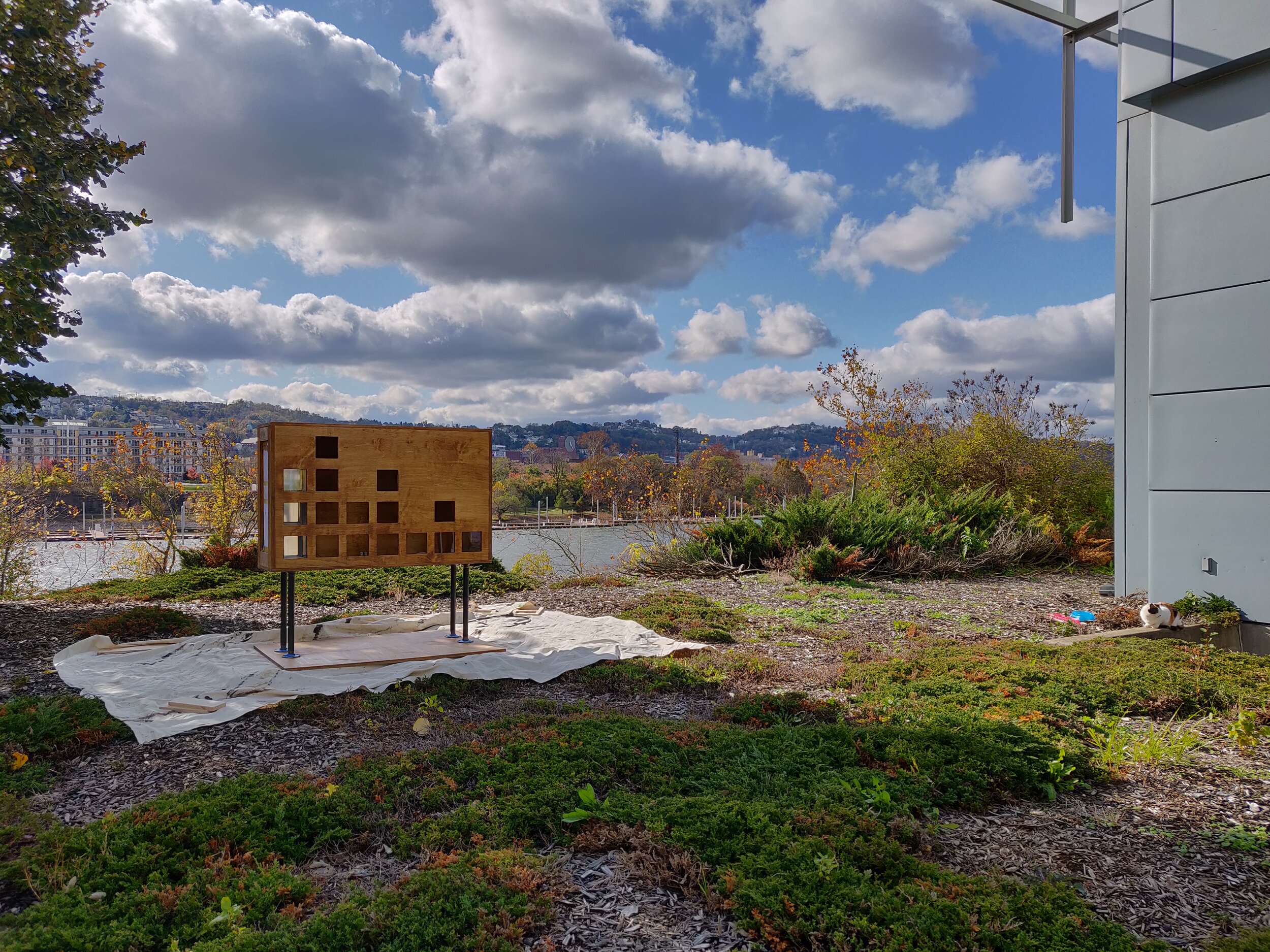
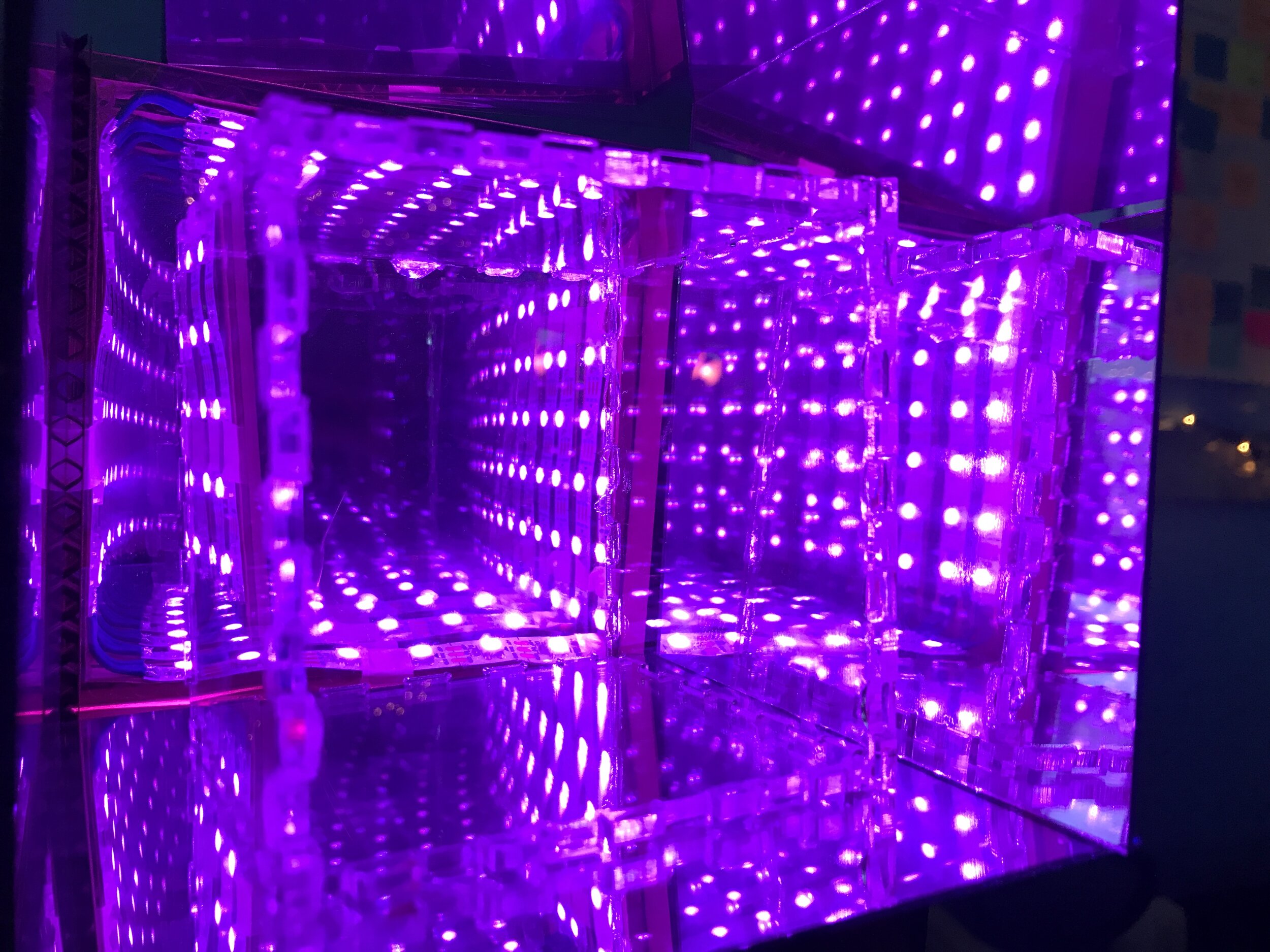

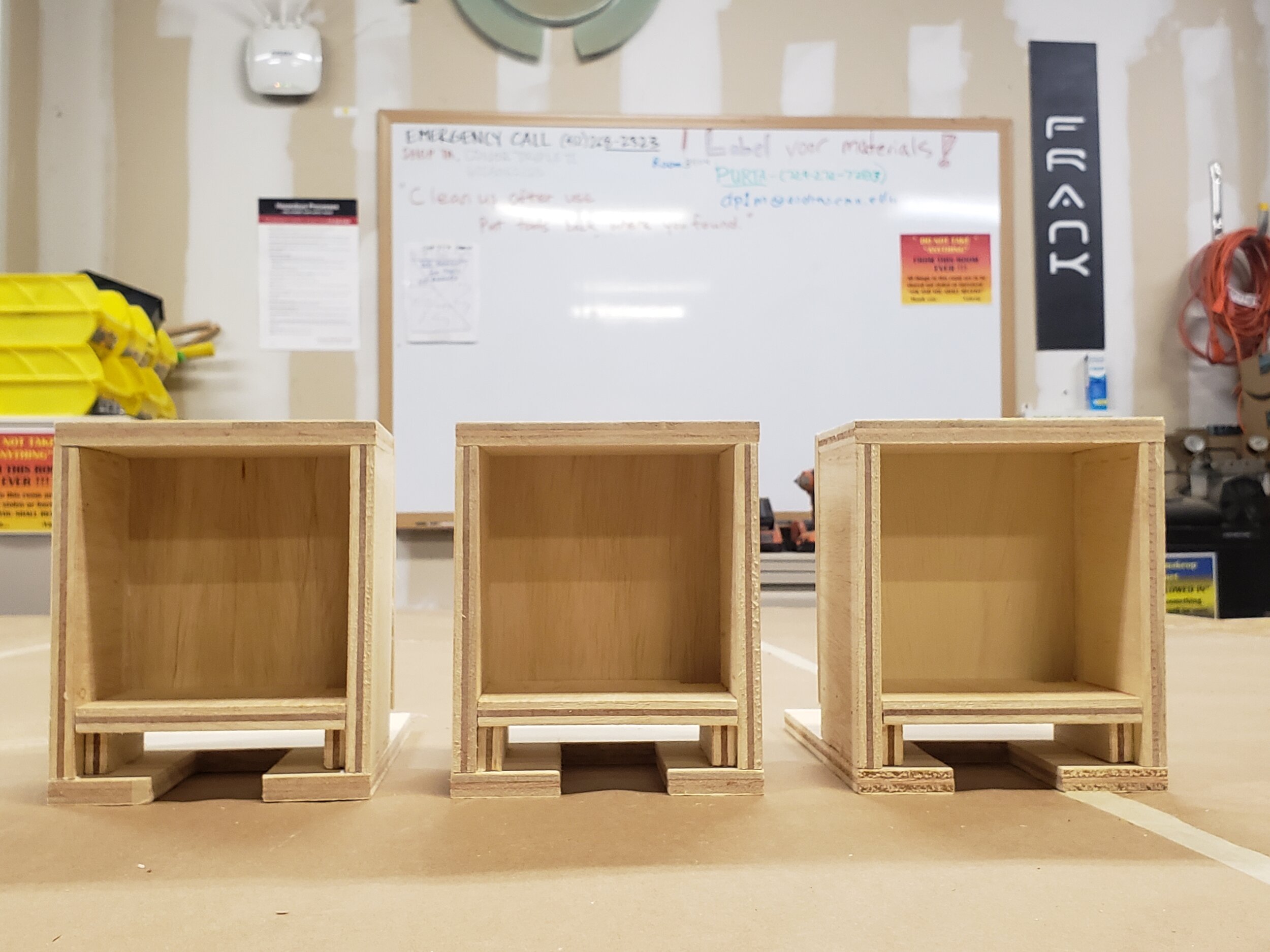
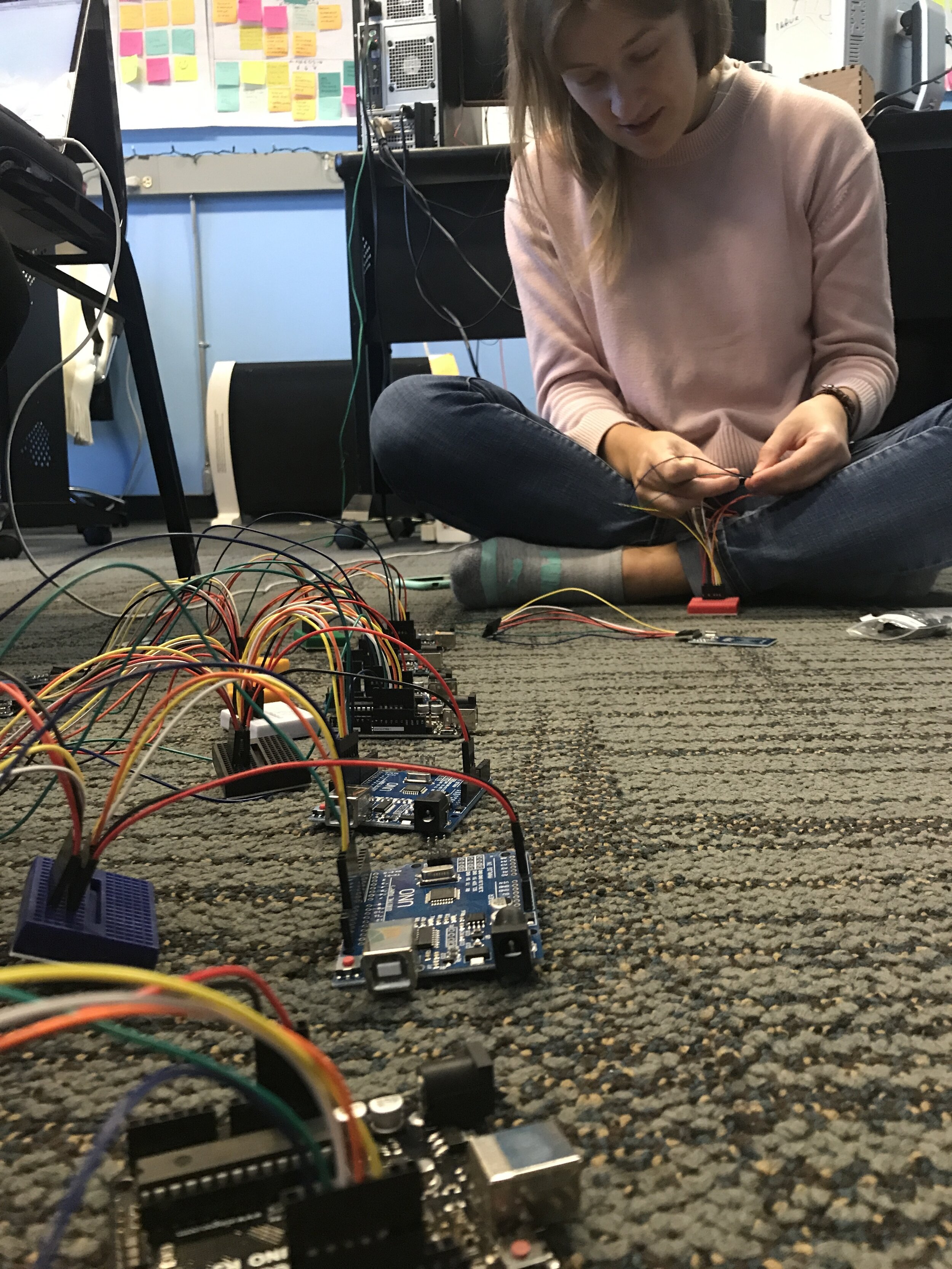
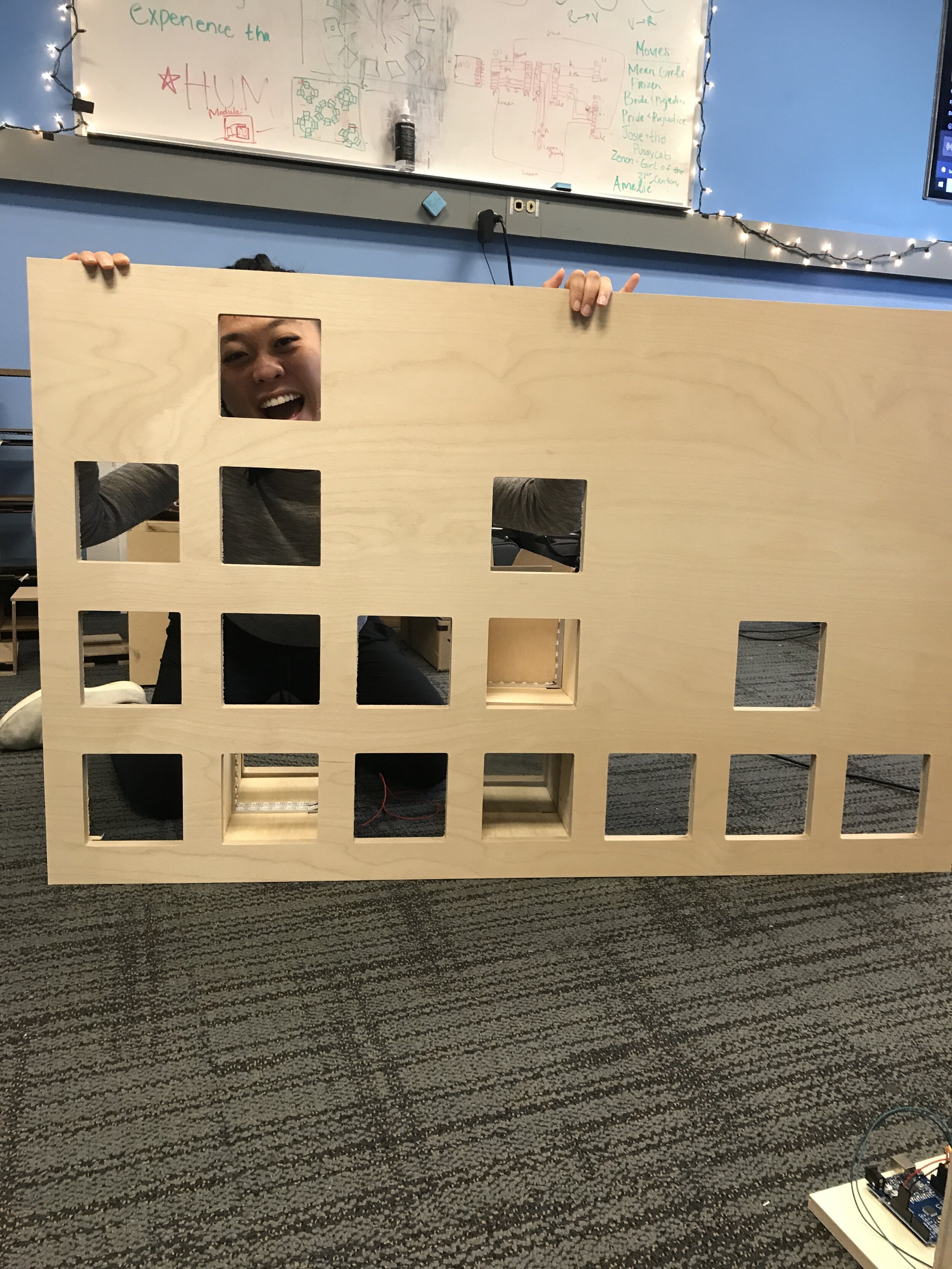
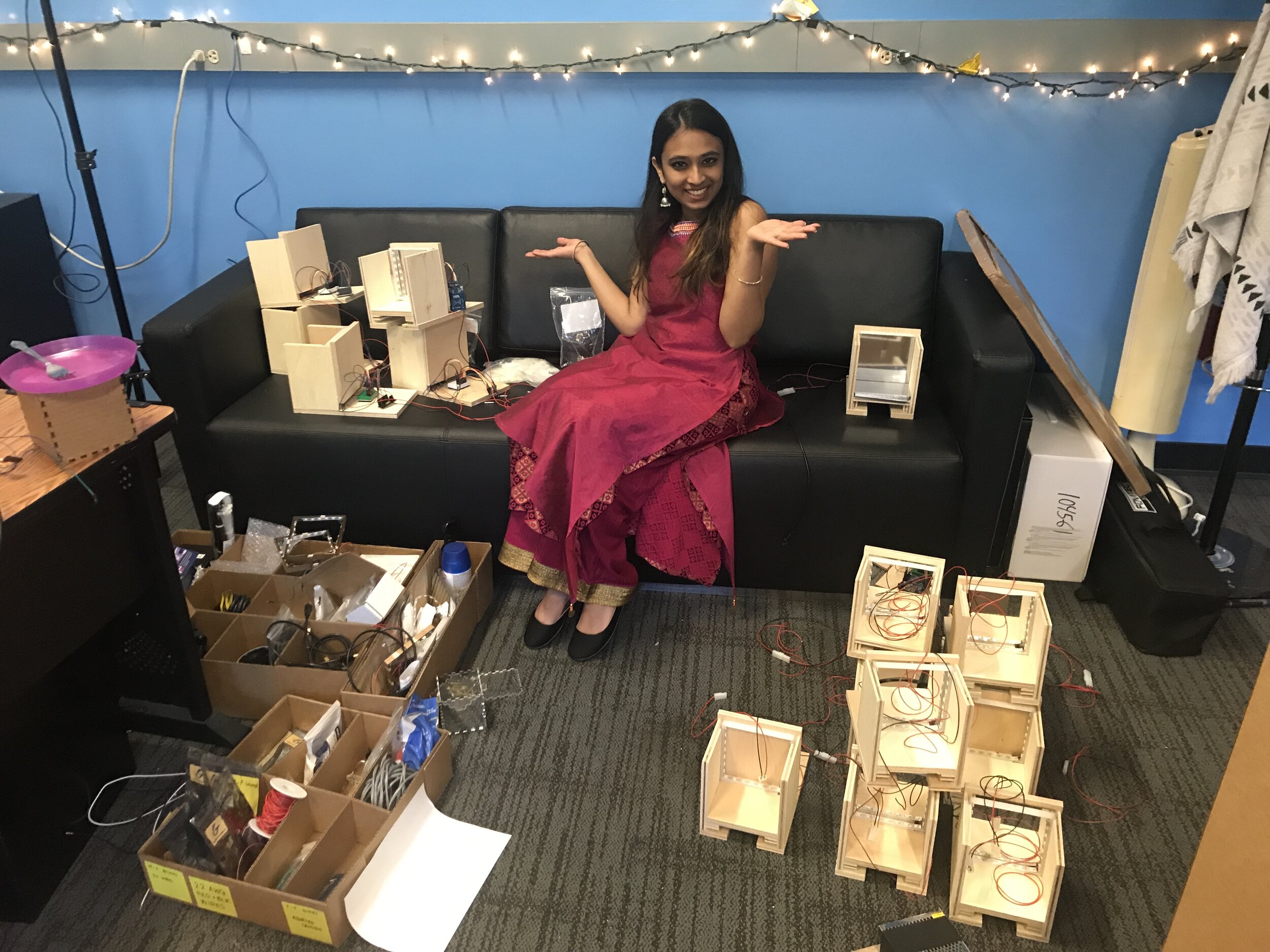
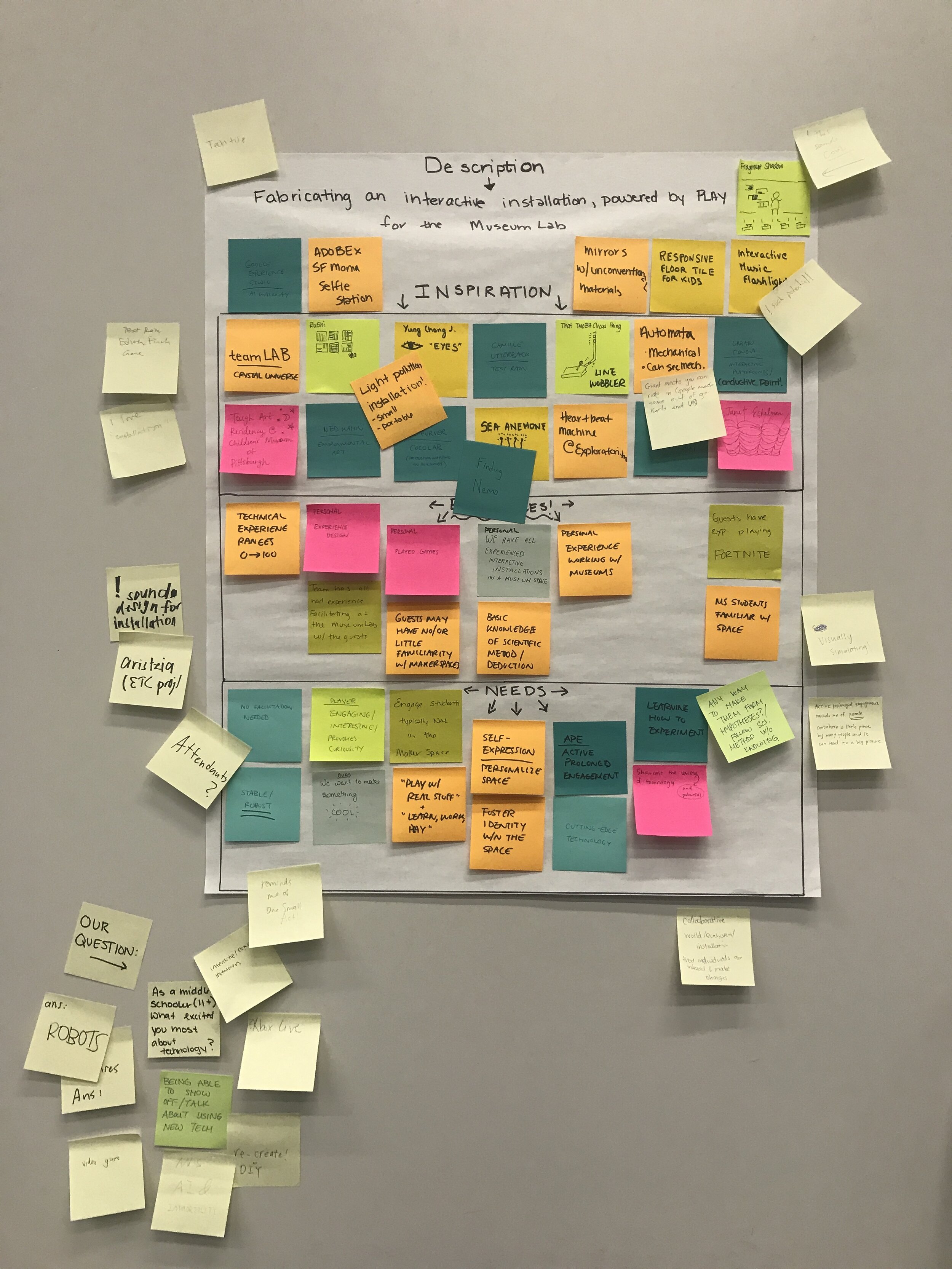
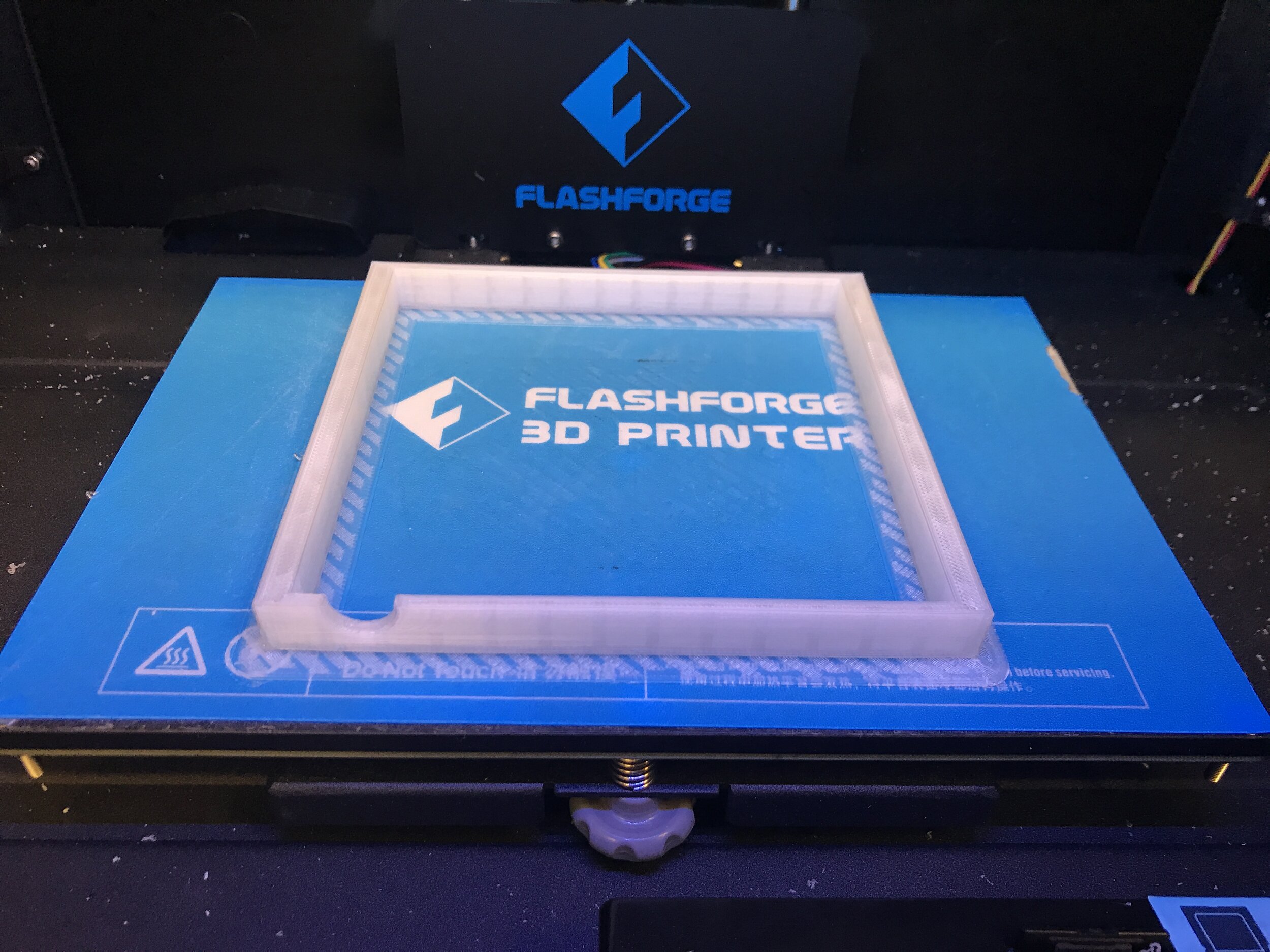
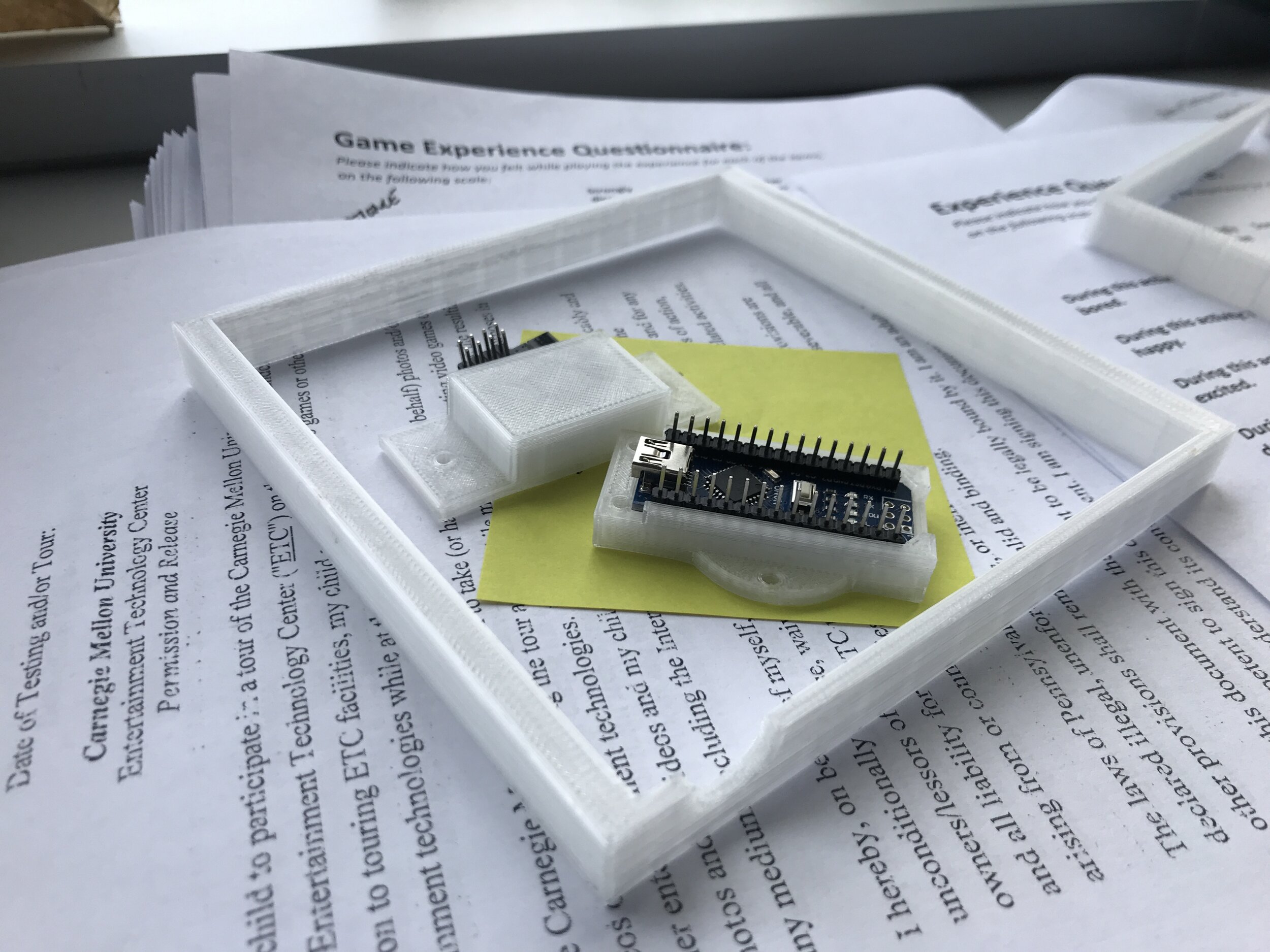

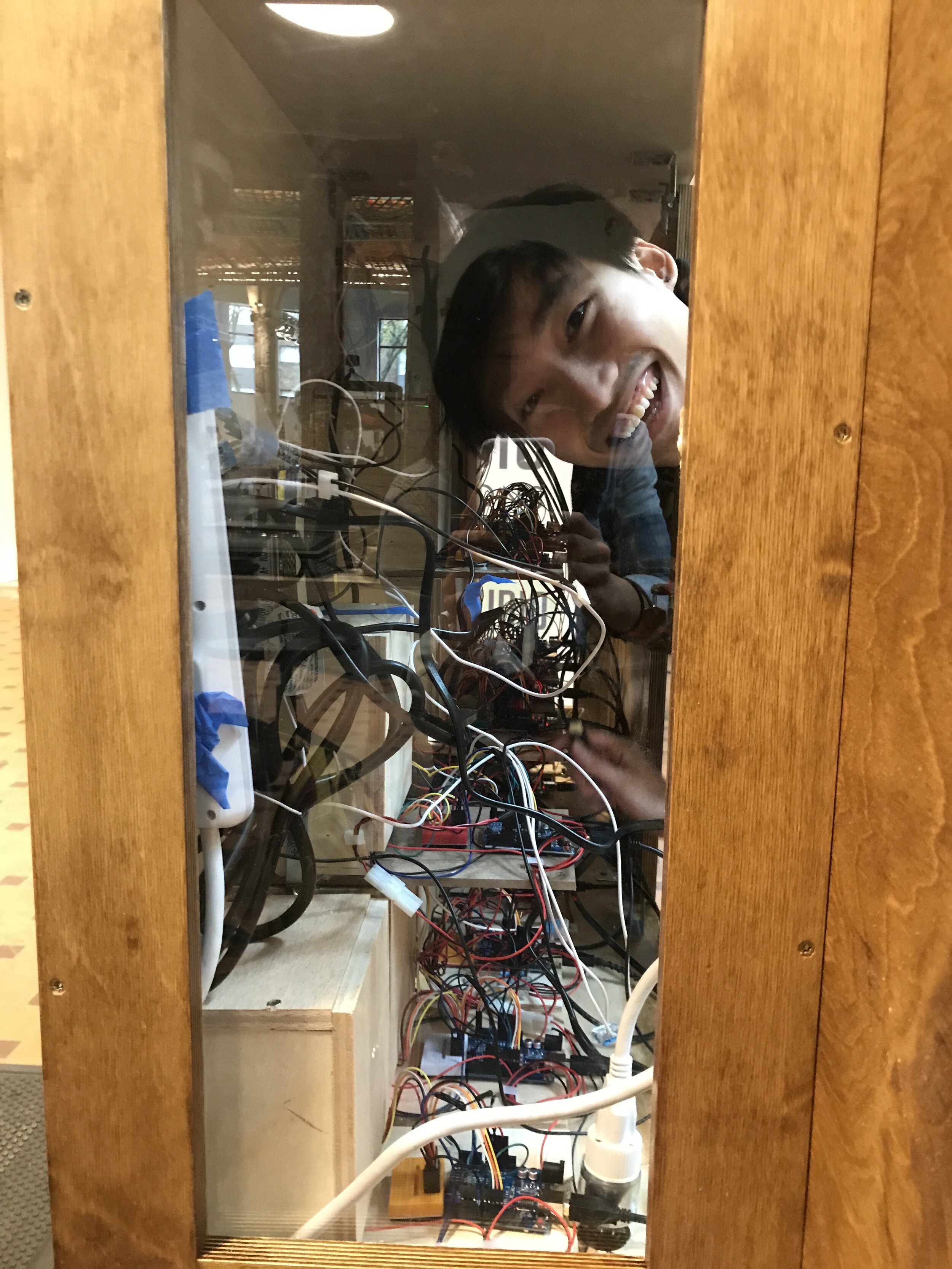
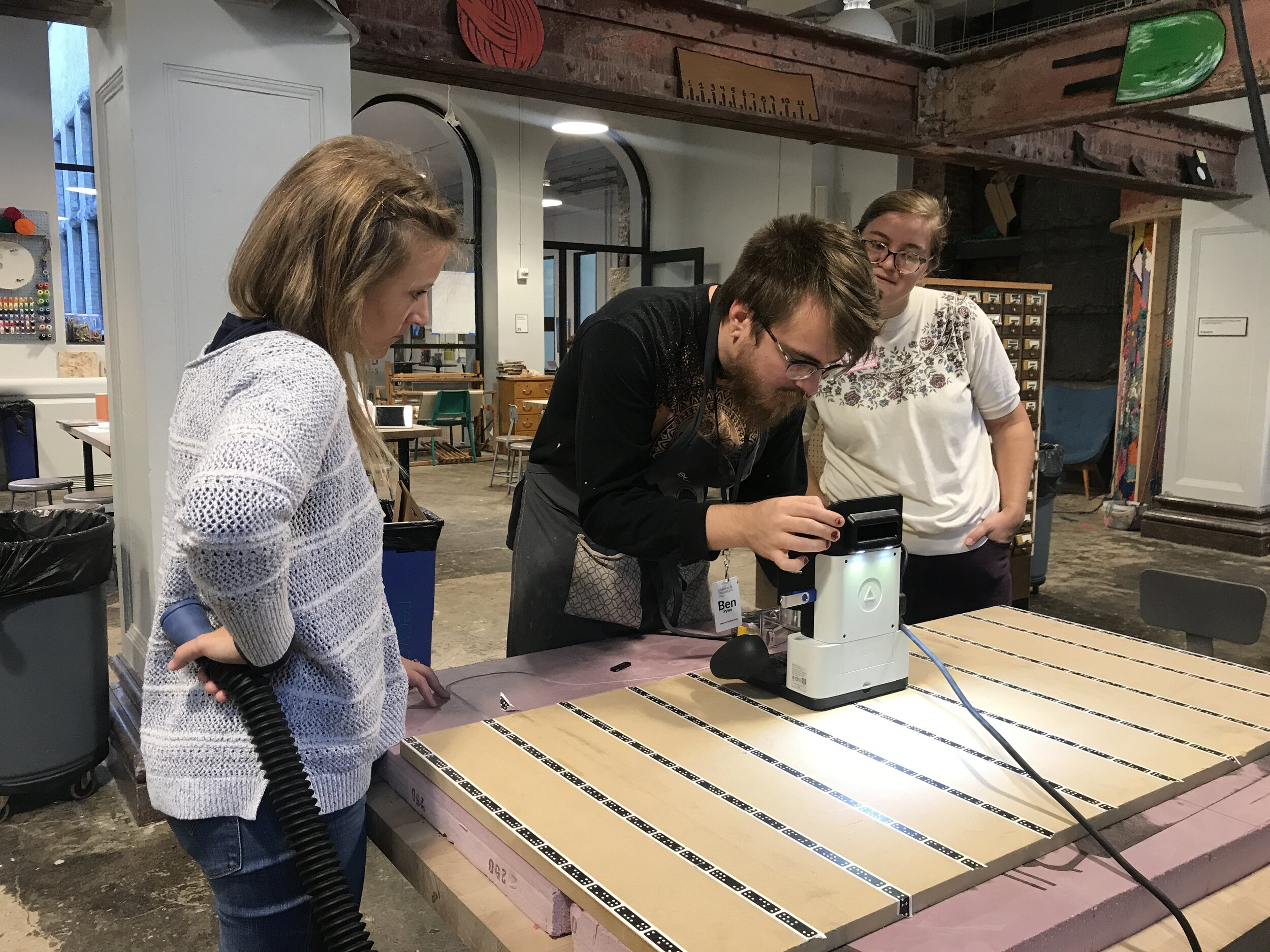
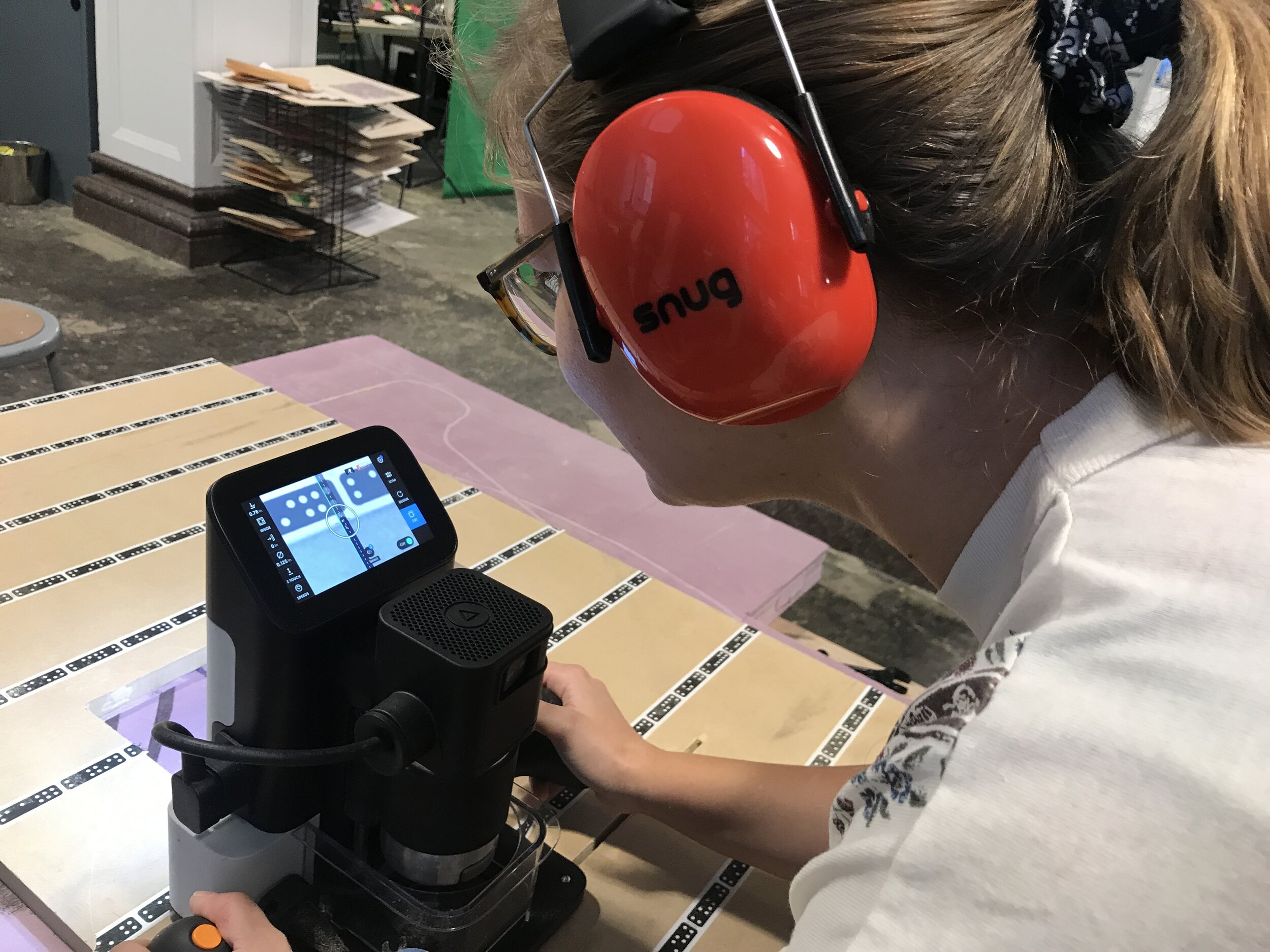
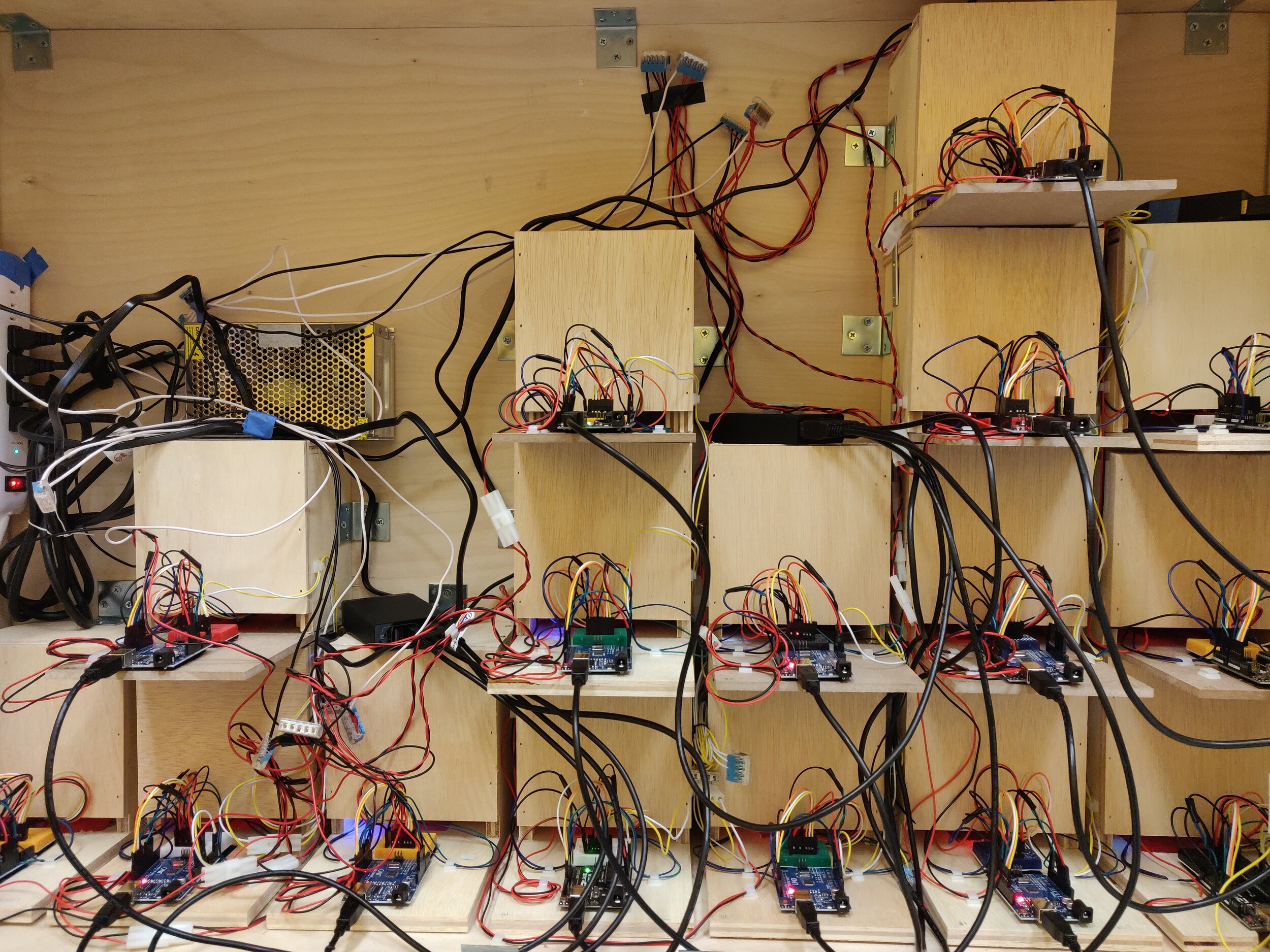

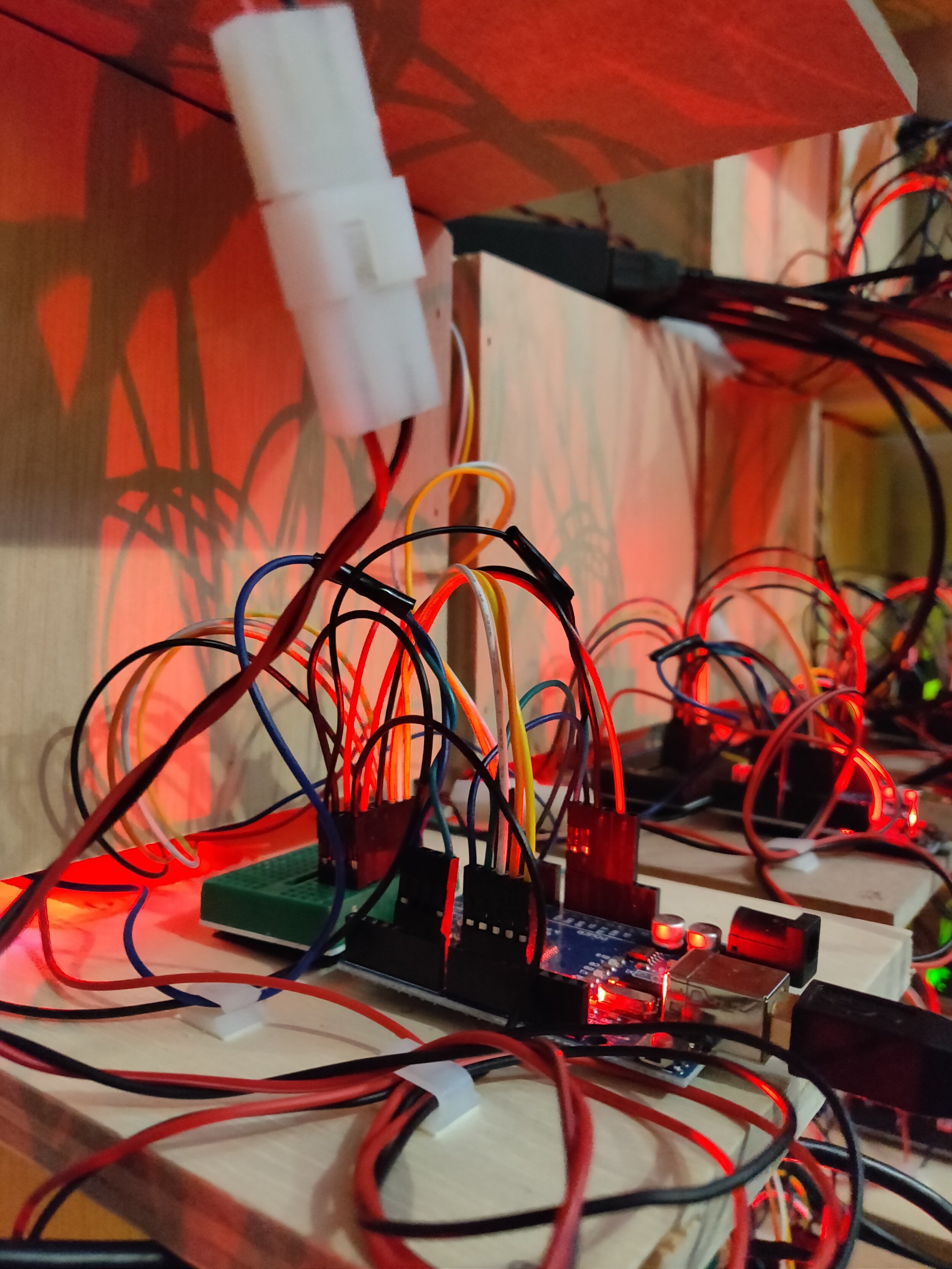
Challenges
Little to no prior experience.
Our team had never executed a location-based installation from start to finish (except for Marissa). We pitched this idea, because we WANTED to get that experience of following a project from blue sky to install. In addition, we had very little fabrication experience. As experience designers specializing in location-based experiences, we felt that this was an element that was missing from our education.
Getting stakeholder buy-in.
As a pitch project, we were held to higher standards. As a location-based installation project (of which there have been many failures at the ETC), we were held to an even higher standard. This made it difficult for us to convince our advisors and other faculty members (who were providing us feedback) that we would be successful and meet our milestones.
Expectations vs. reality.
At the beginning of the project, we were told to target a middle school audience since there would be a middle school above the museum that we could consistently playtest with. Once we began playtesting, there were no middle school aged children in the space, there was low traffic in general, and we could not establish contact with members of the school given that it was a busy time for them.

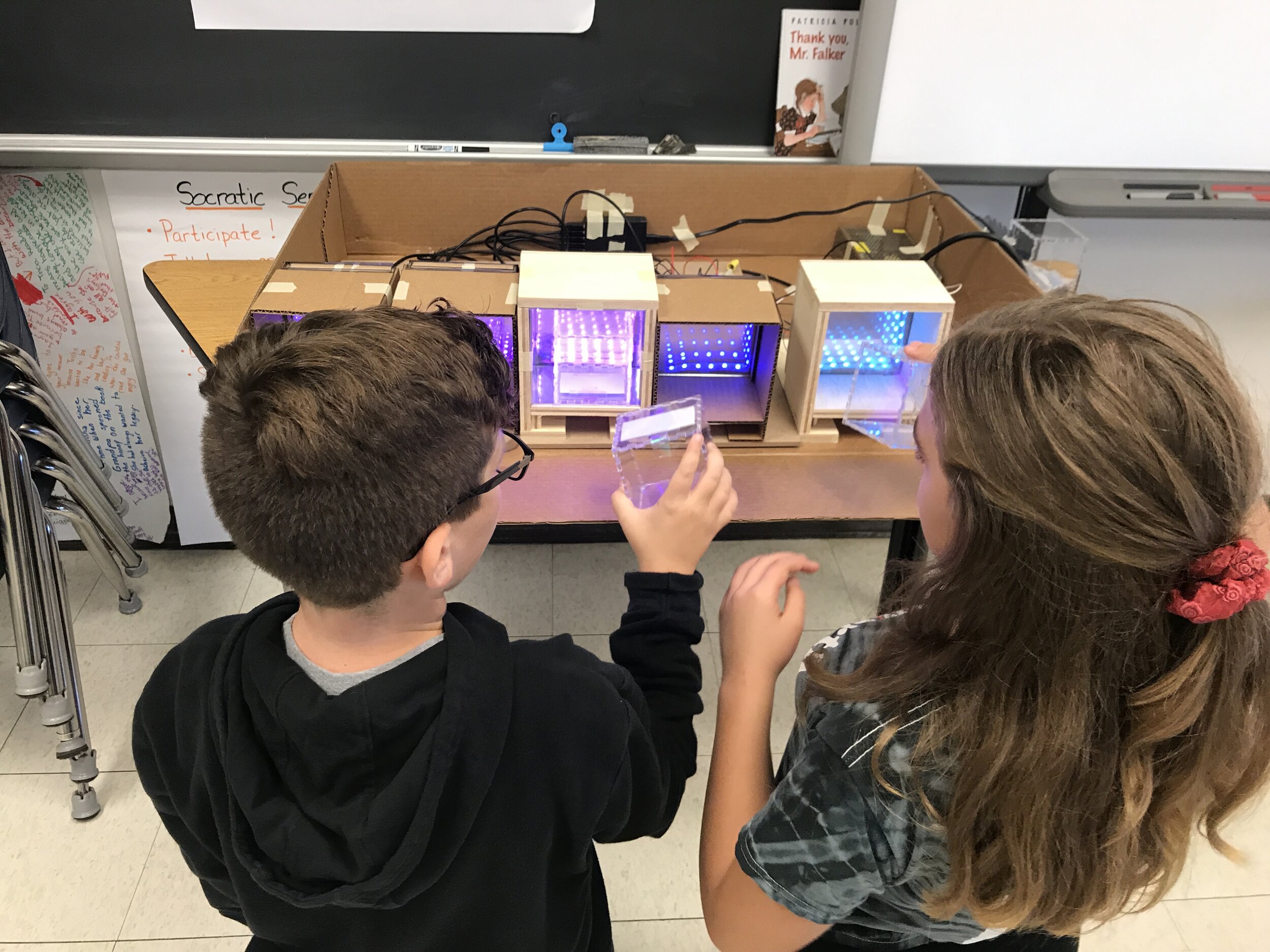

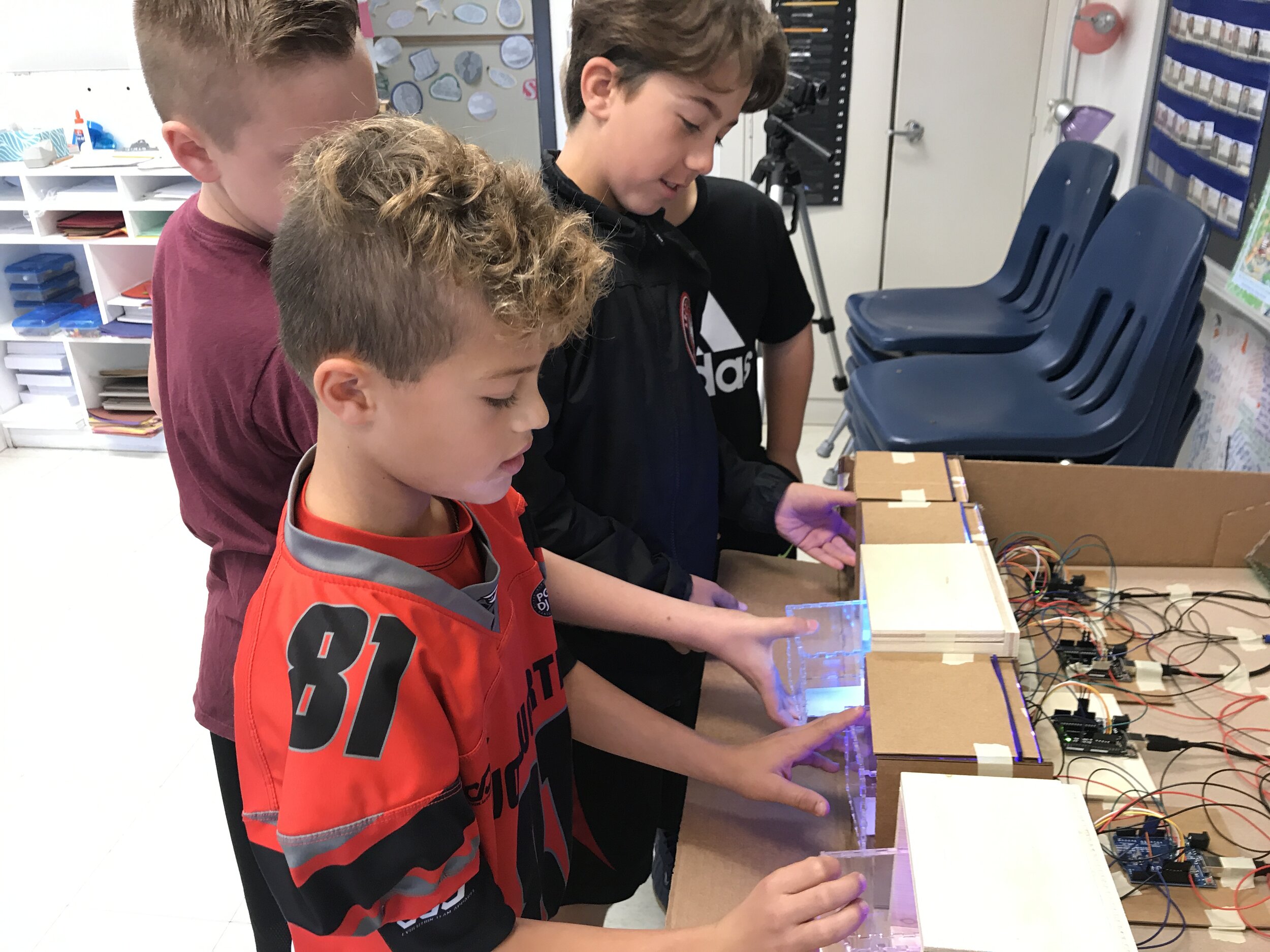

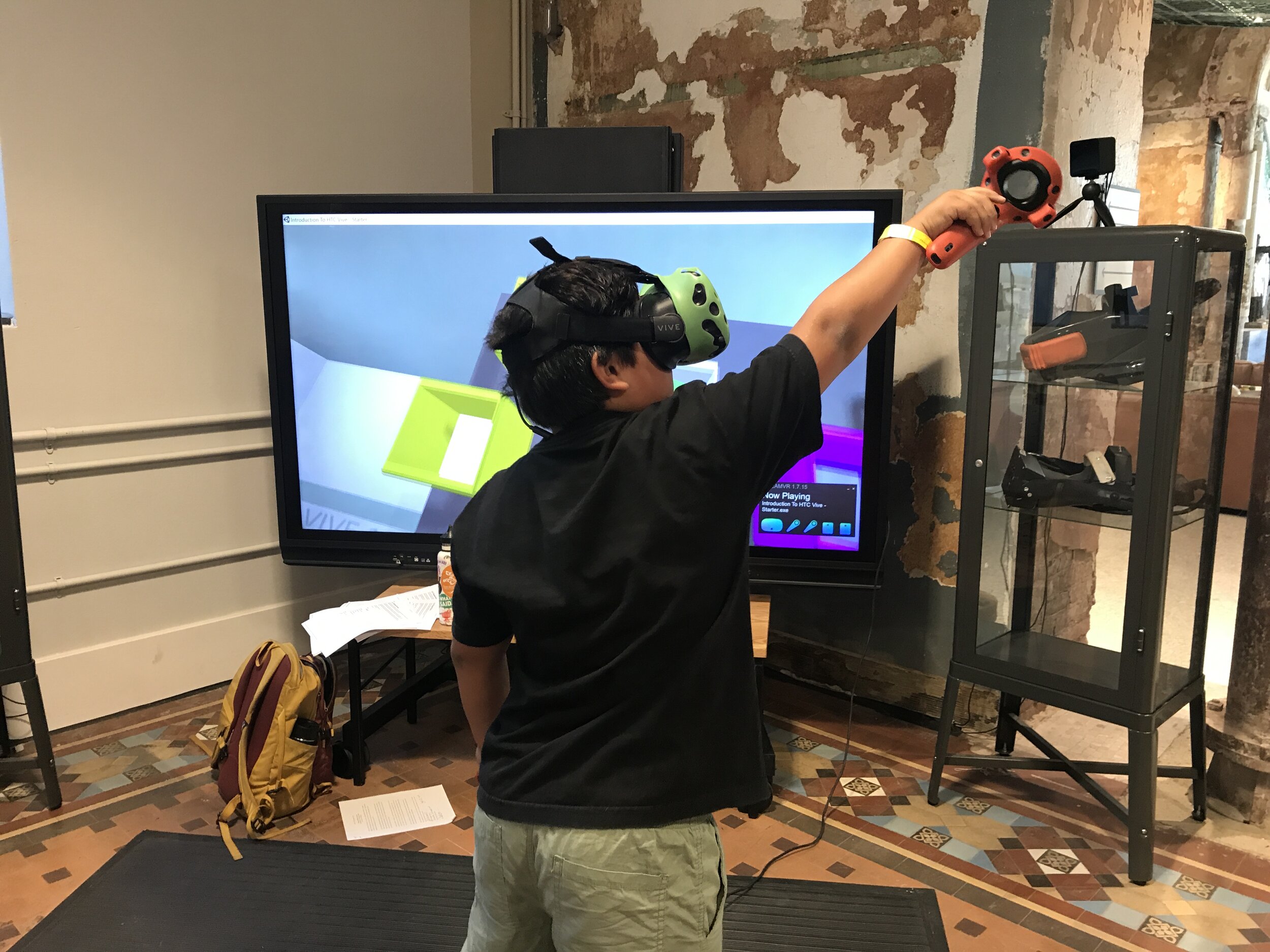

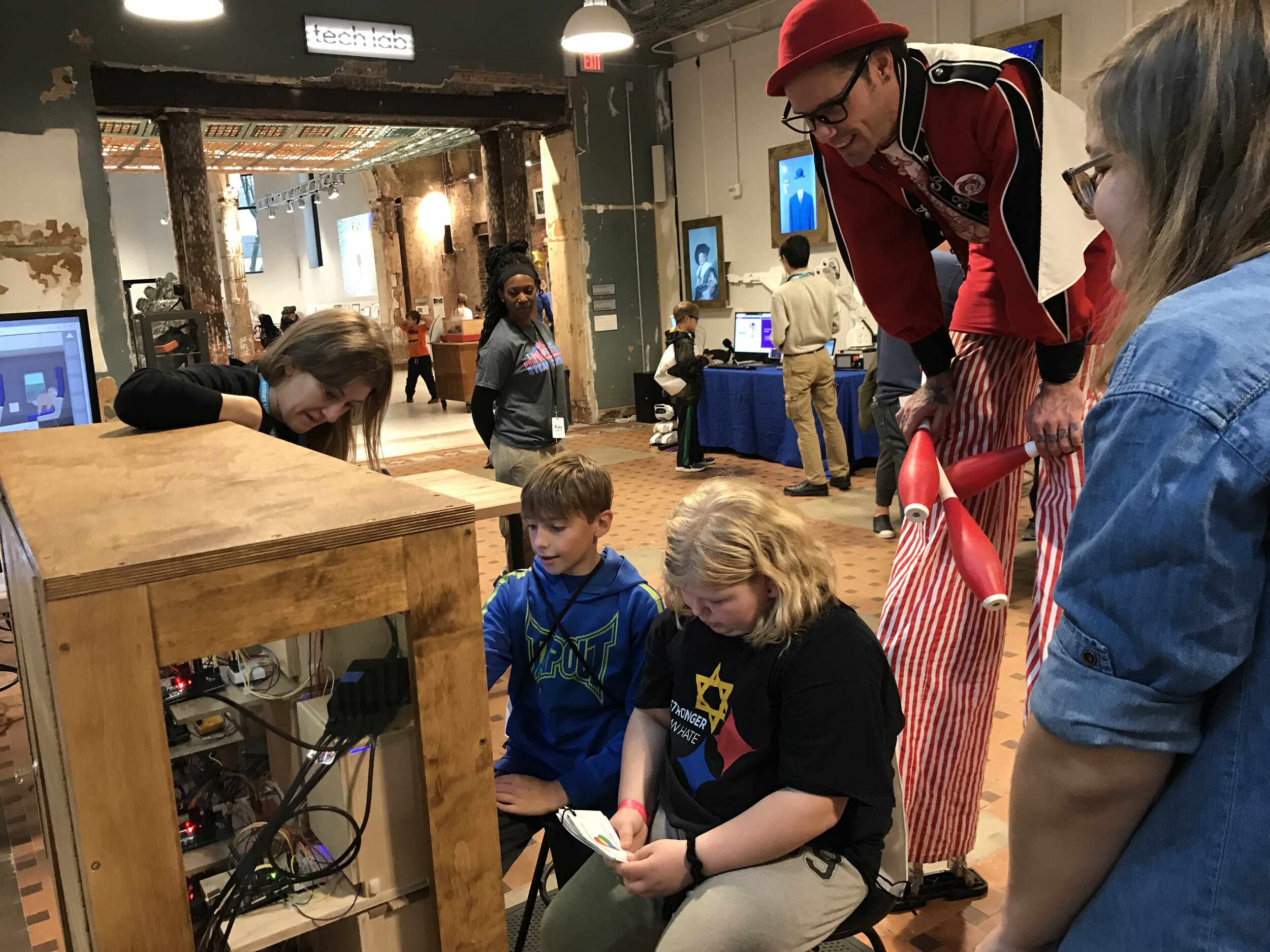

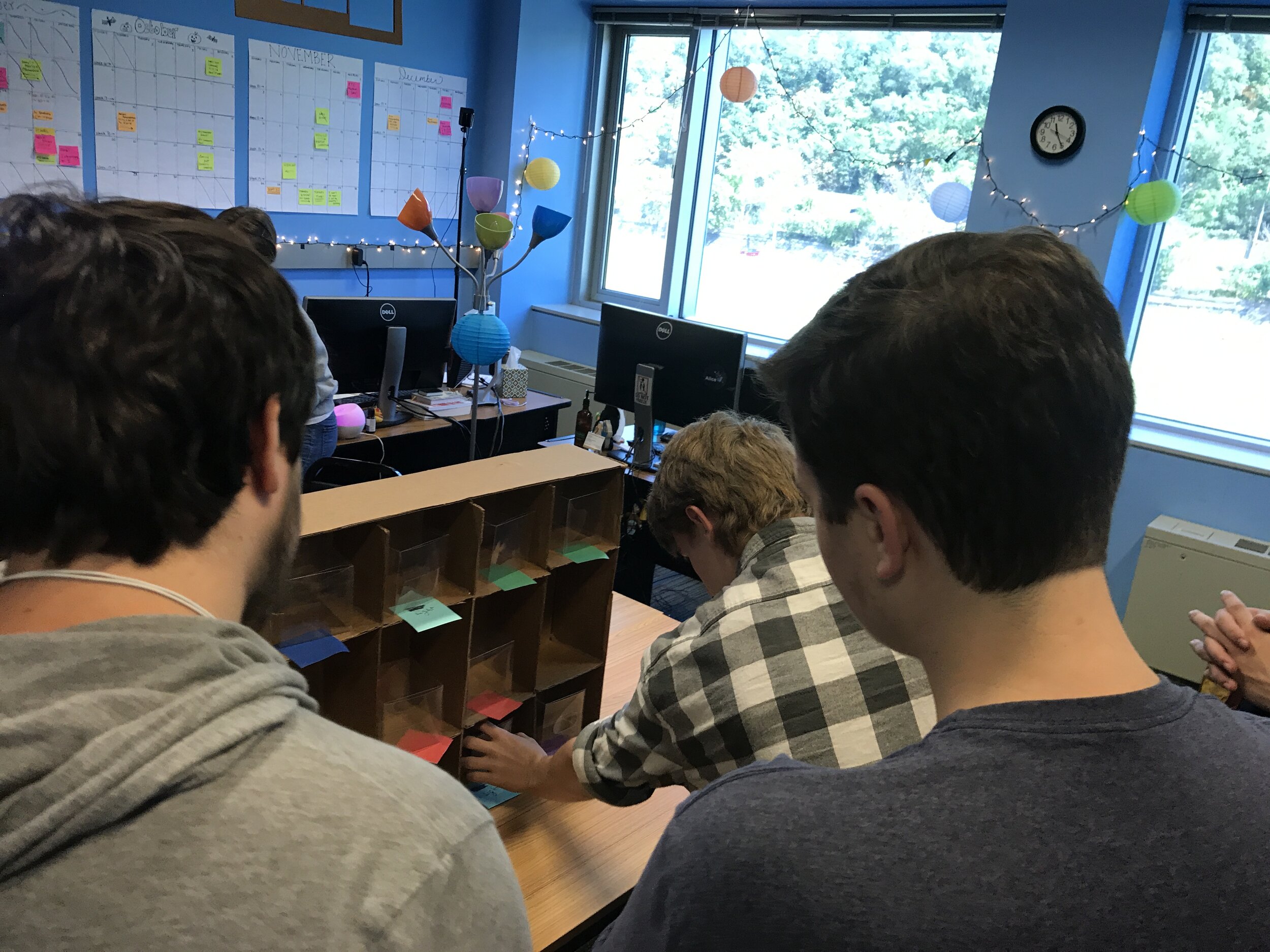
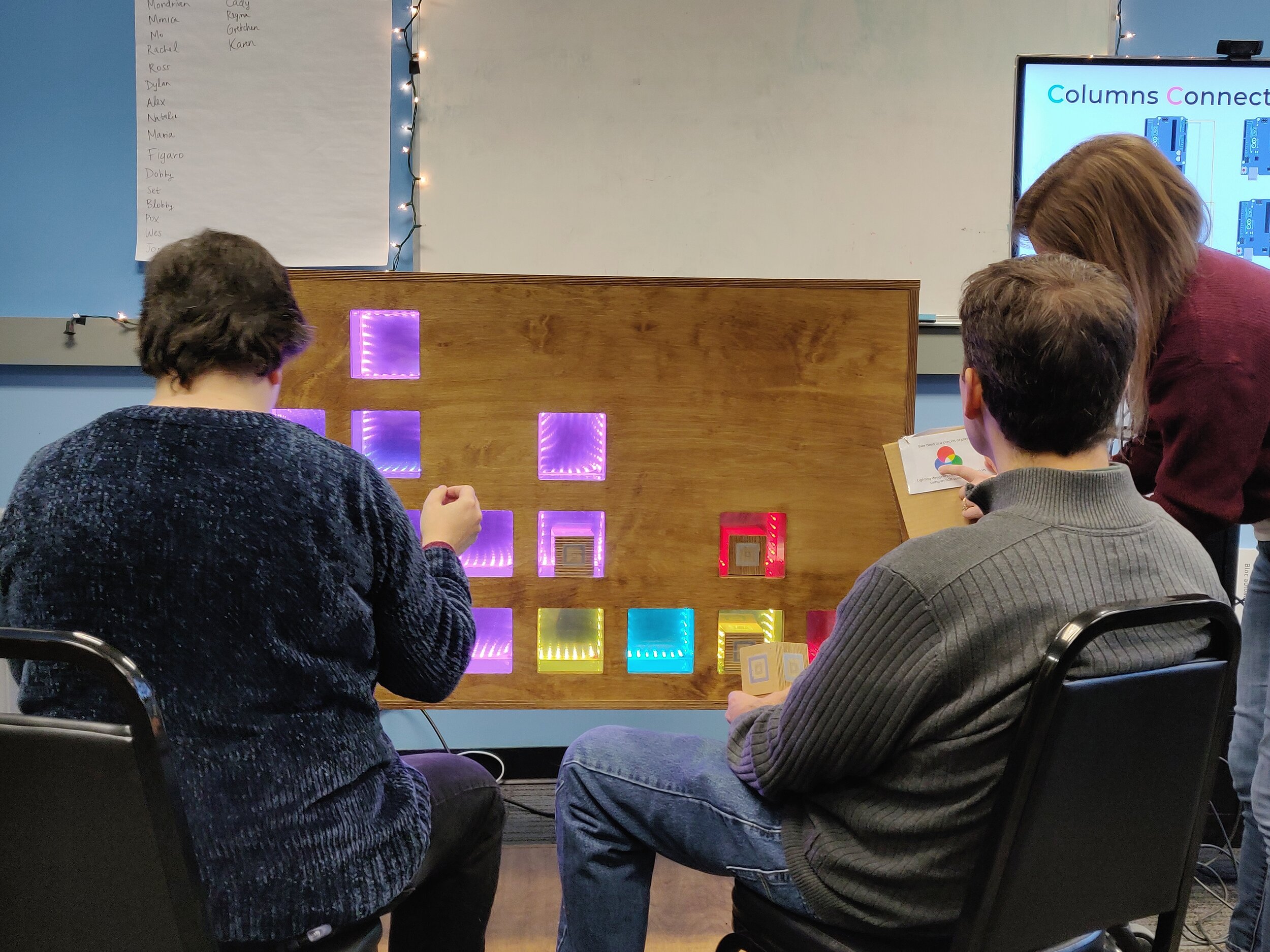
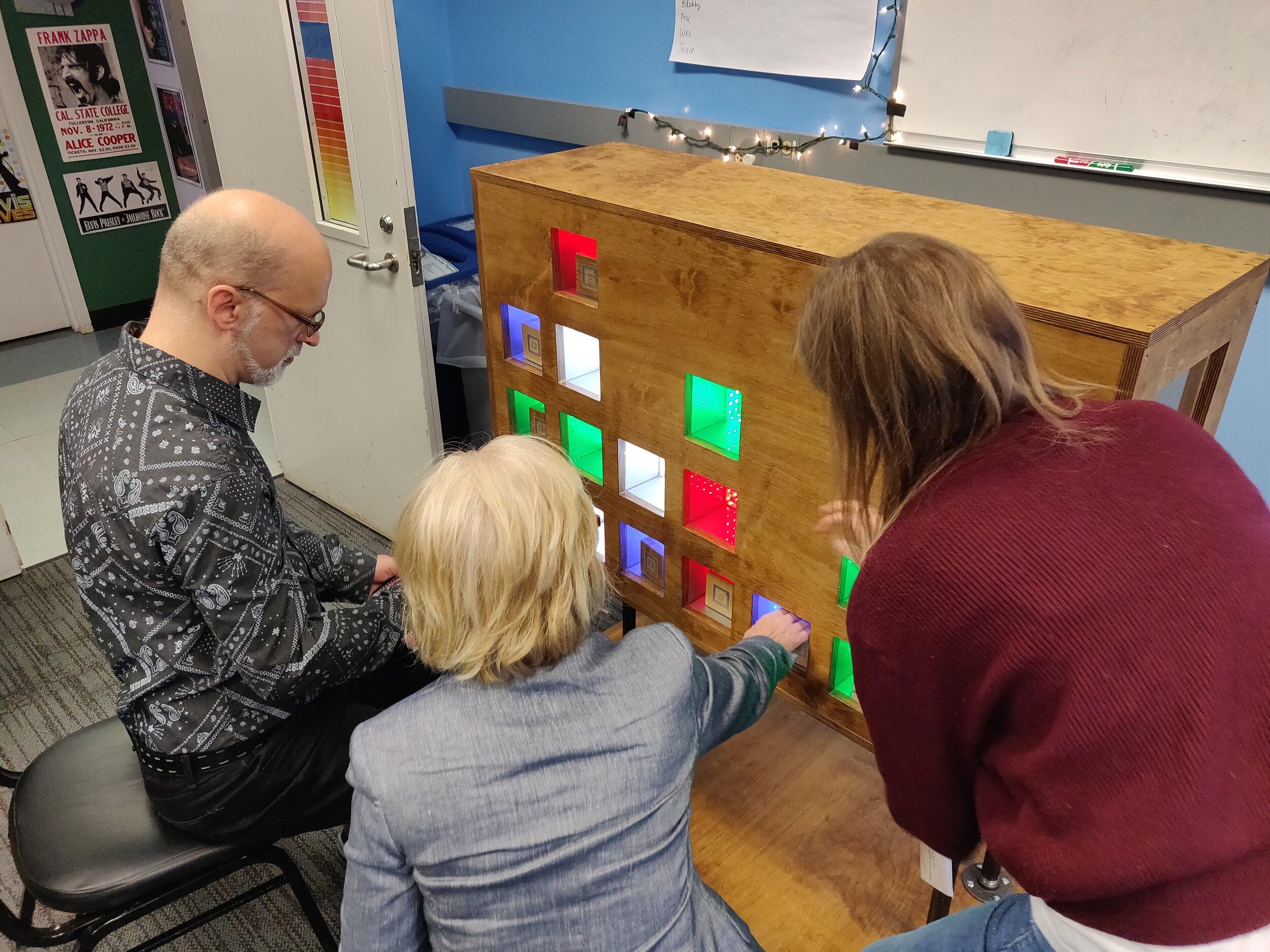
Solutions
Consulting with subject matter experts.
We interviewed middle school educators to get into the mindset of middle school students. We developed strong relationships with technical experts at the ETC and Children’s Museum, and cultivated a relationship with staff members working on the floor of the MuseumLab.
Inviting advisors and faculty to participate in our design process.
Sending out meeting agendas earlier with thorough development blogs and asking advisors to list questions, allowed us to address concerns during weekly meetings. As well, scheduling meetings with individual faculty members for their expertise created more transparency in our design process so that during faculty-wide grading, we had more faculty who were willing to advocate for us.
Building modularly.
We decided to approach our design modularly. With a proof of concept completed by halves, we were able to prove to faculty that we could execute this project on time. We were able to replicate the process and complete the entire installation in 2.5 weeks. This provided us with 4 weeks to playtest and iterate on our design. As well, with a modular approach, we could easily debug.
Thorough documentation.
ETC location-based projects notoriously fail after installation or down the line, with no ETC students around, they typically die from lack of ability to repair. To prevent this concern, we involved technical staff throughout the design process and reviewed handoff documentation prior to handoff.
Finding other opportunities for playtesting.
When we were unable to playtest efficiently at the MuseumLab, we found other opportunities to playtest with a similar demographic. We traveled to Avonworth Elementary School and took advantage of ETC community tours.
Scaling our age group down.
When we installed for our soft launch, we realized that the demographic that we had designed for (10-14 year olds), was not in the space. Since the MuseumLab was still pretty new, most of the traffic in the MuseumLab were children from the main building, which targeted 0-8 year olds. We ultimately decided to retain the color logic elements and hidden effects for the older children, but to add in more responsive feedback for younger children. For example, when a block is placed into a cubby, all of the adjacent cubbies turn to that color in order to have a larger feedback response. As well, when the wall is not interacted with for a certain amount of time, a shimmering effect occurs across the entire installation to draw kids in to play.
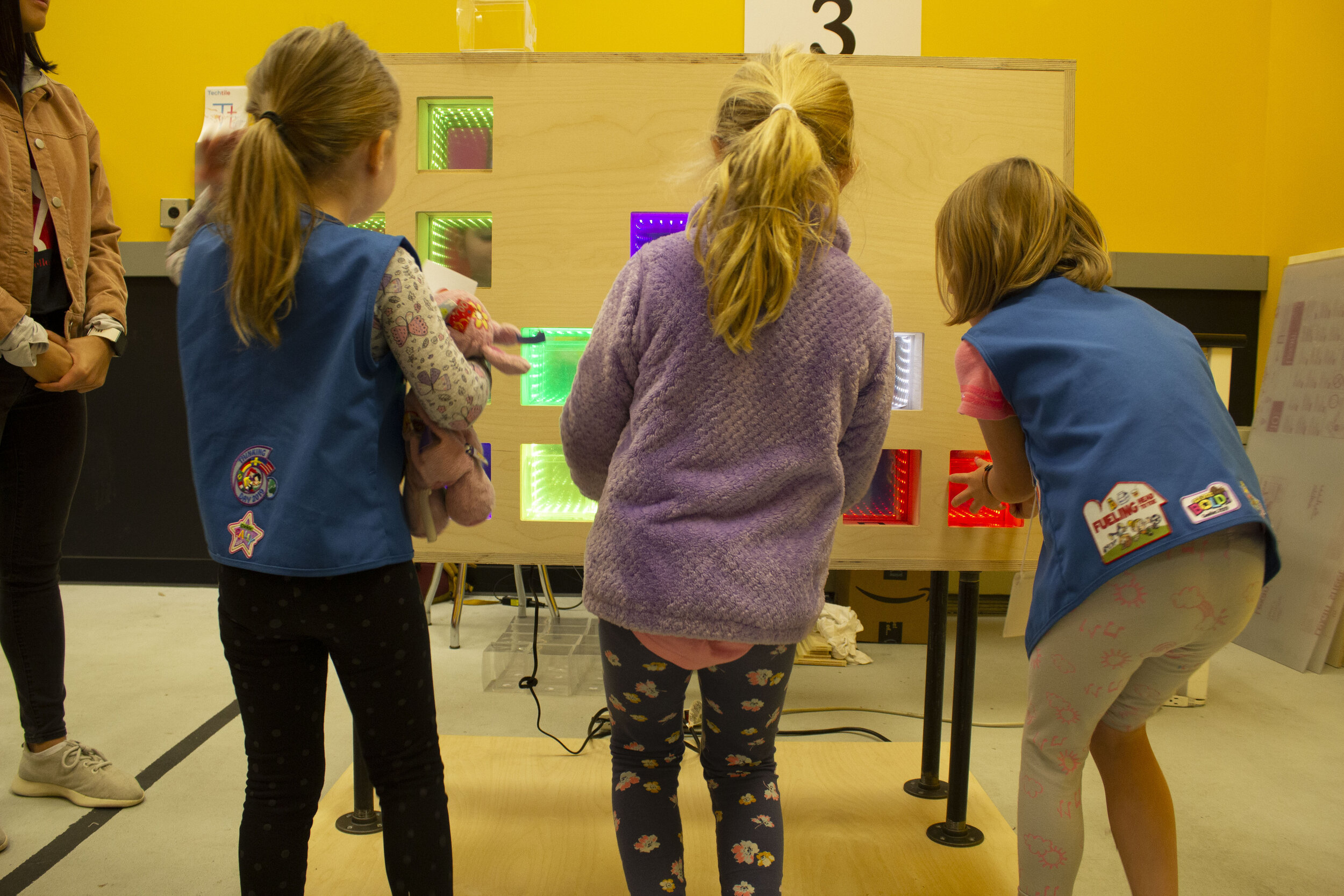
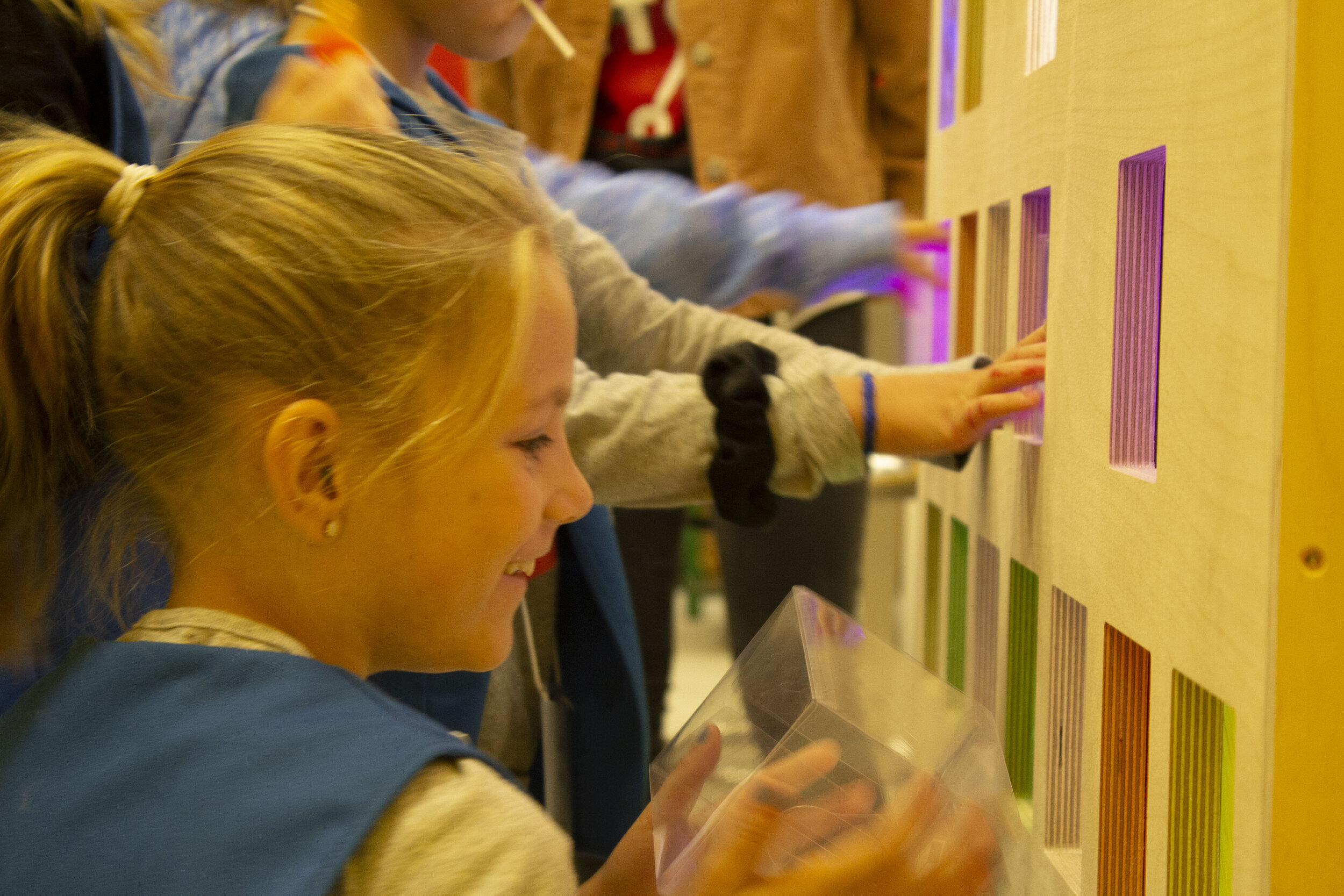
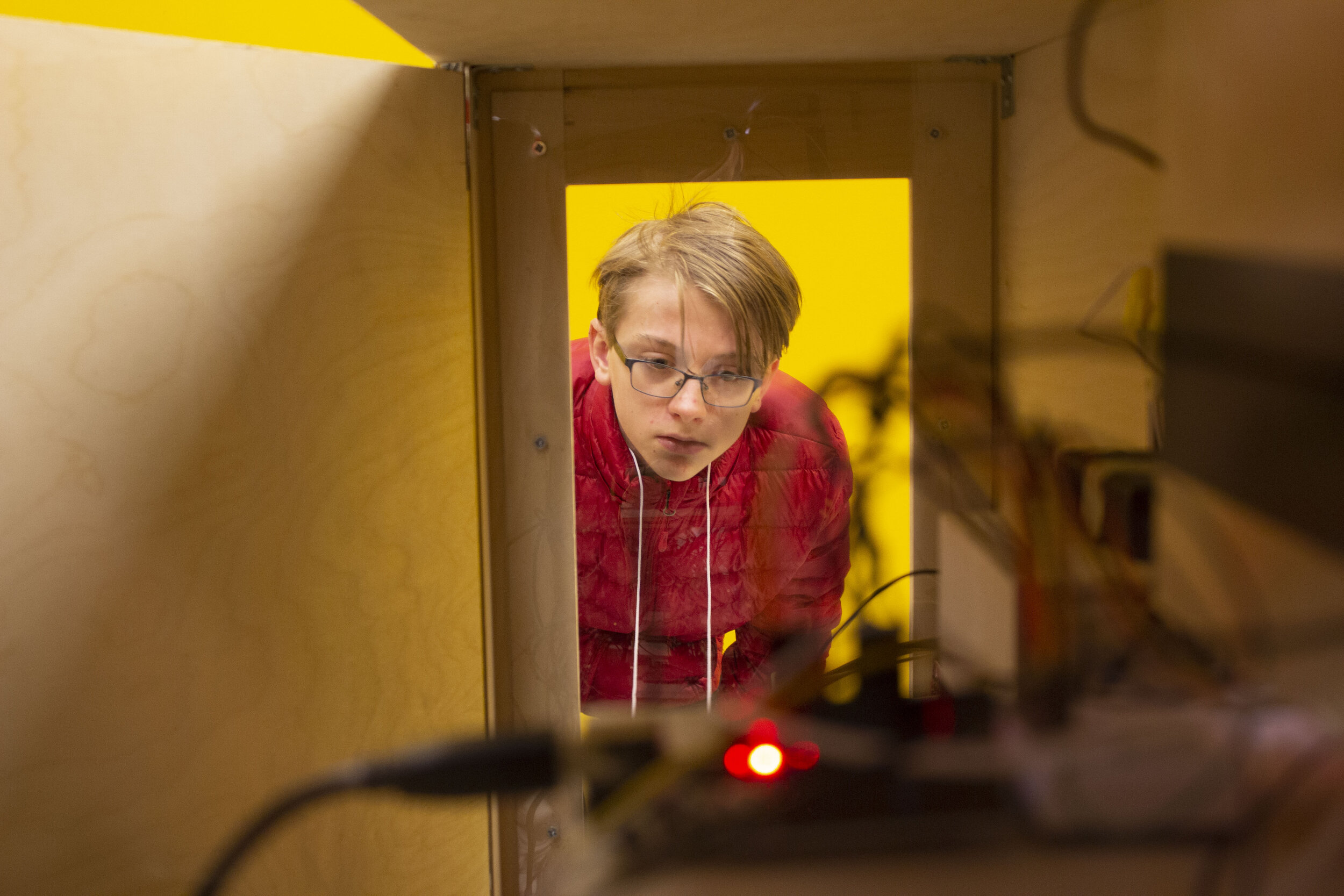
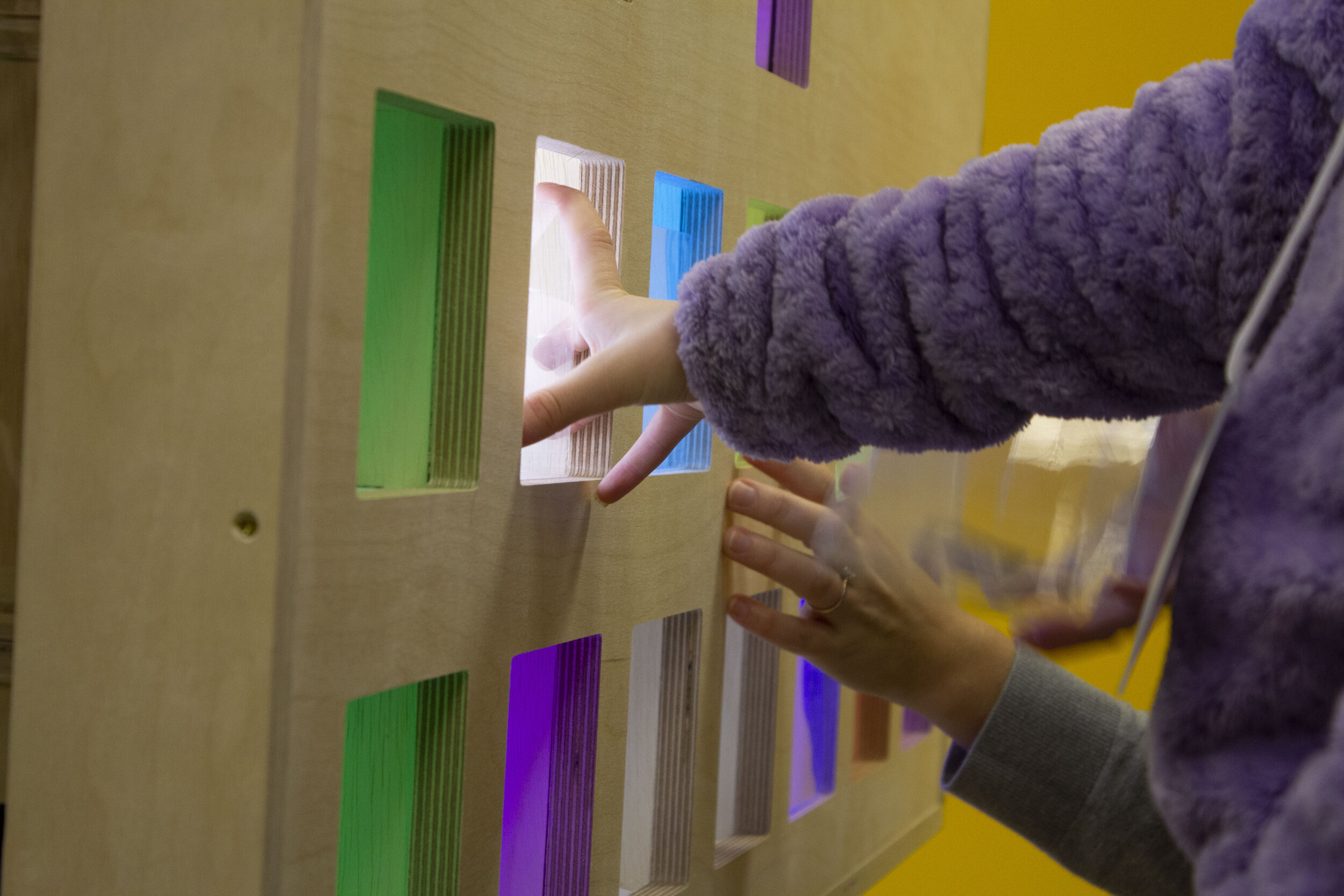
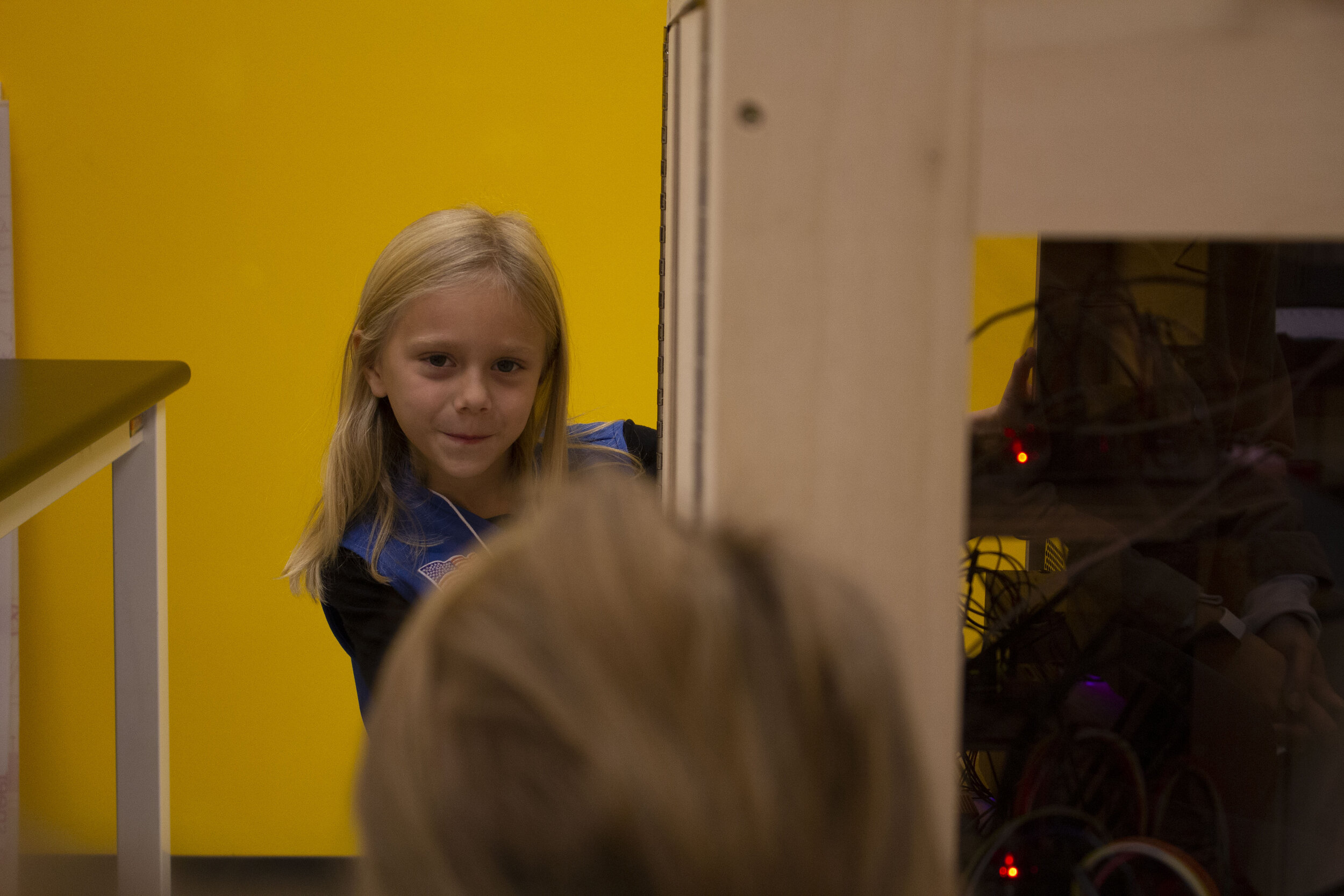
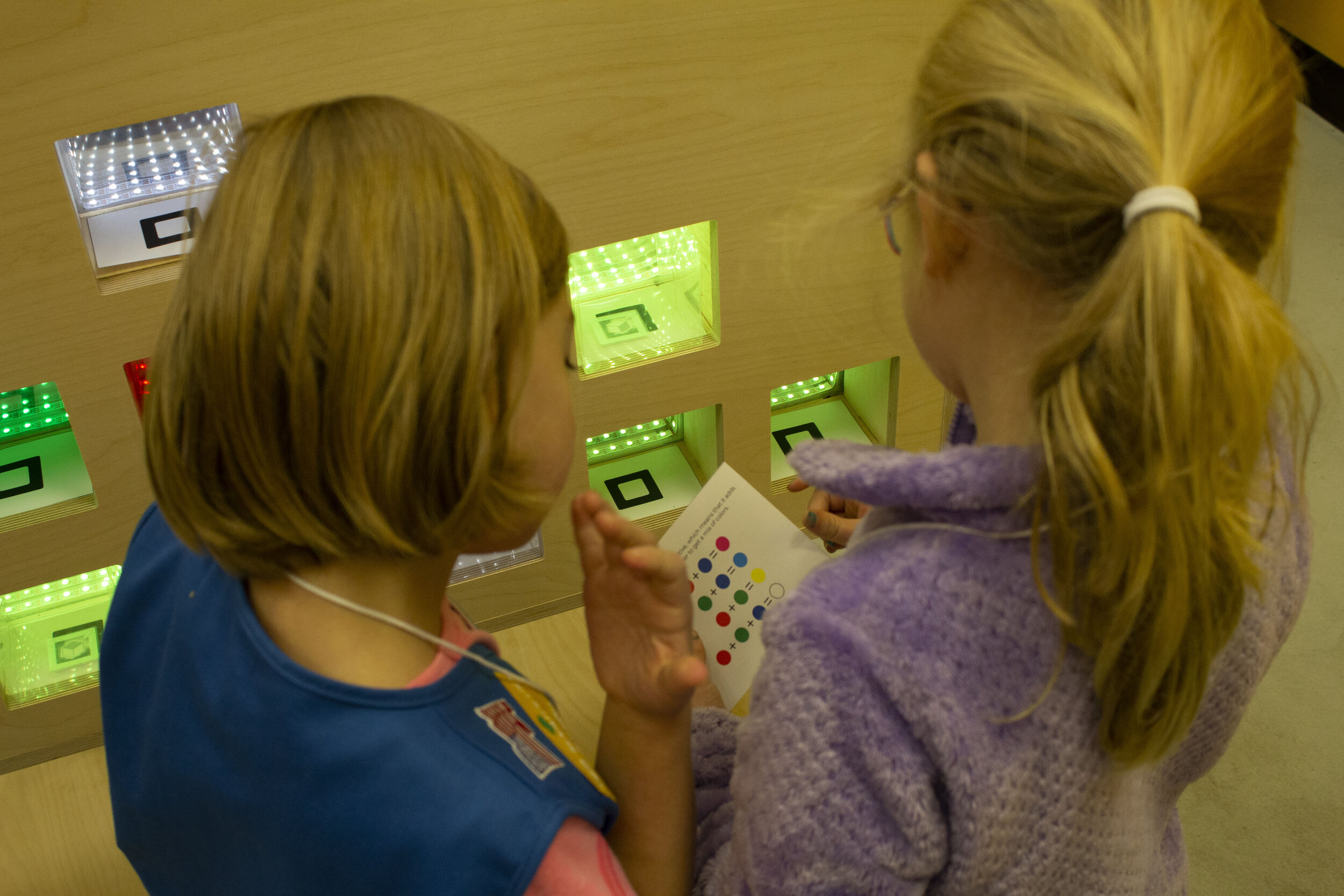
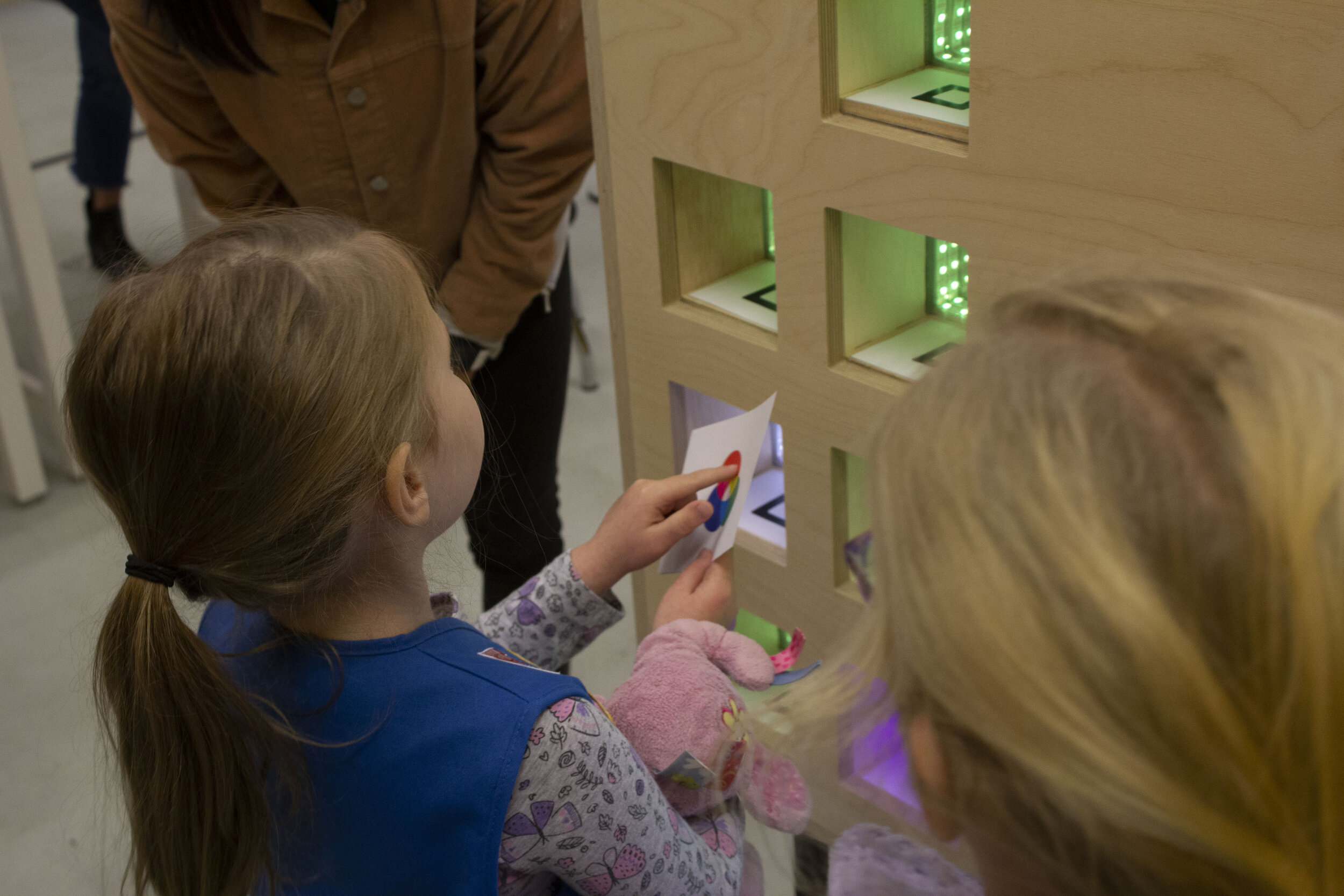
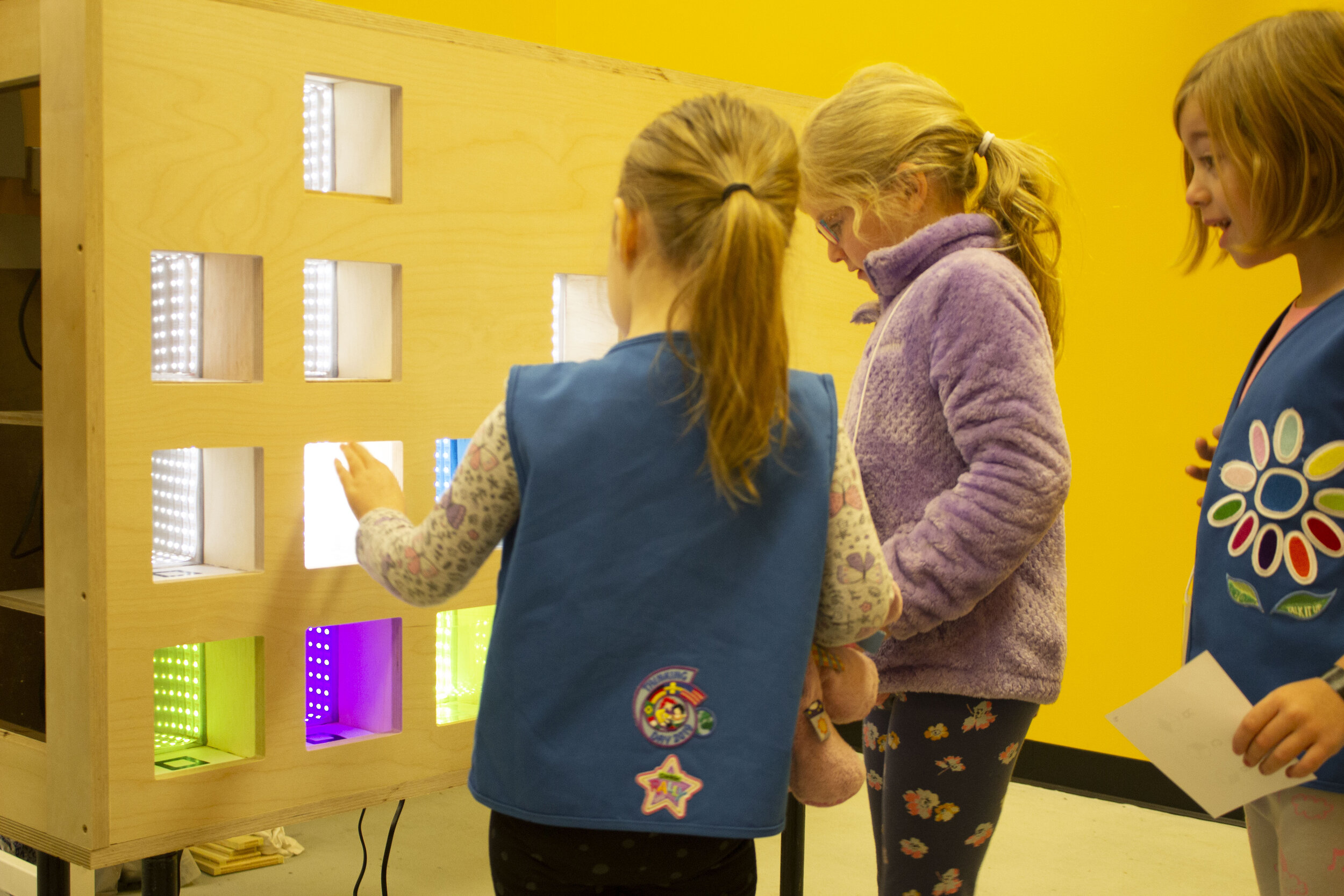
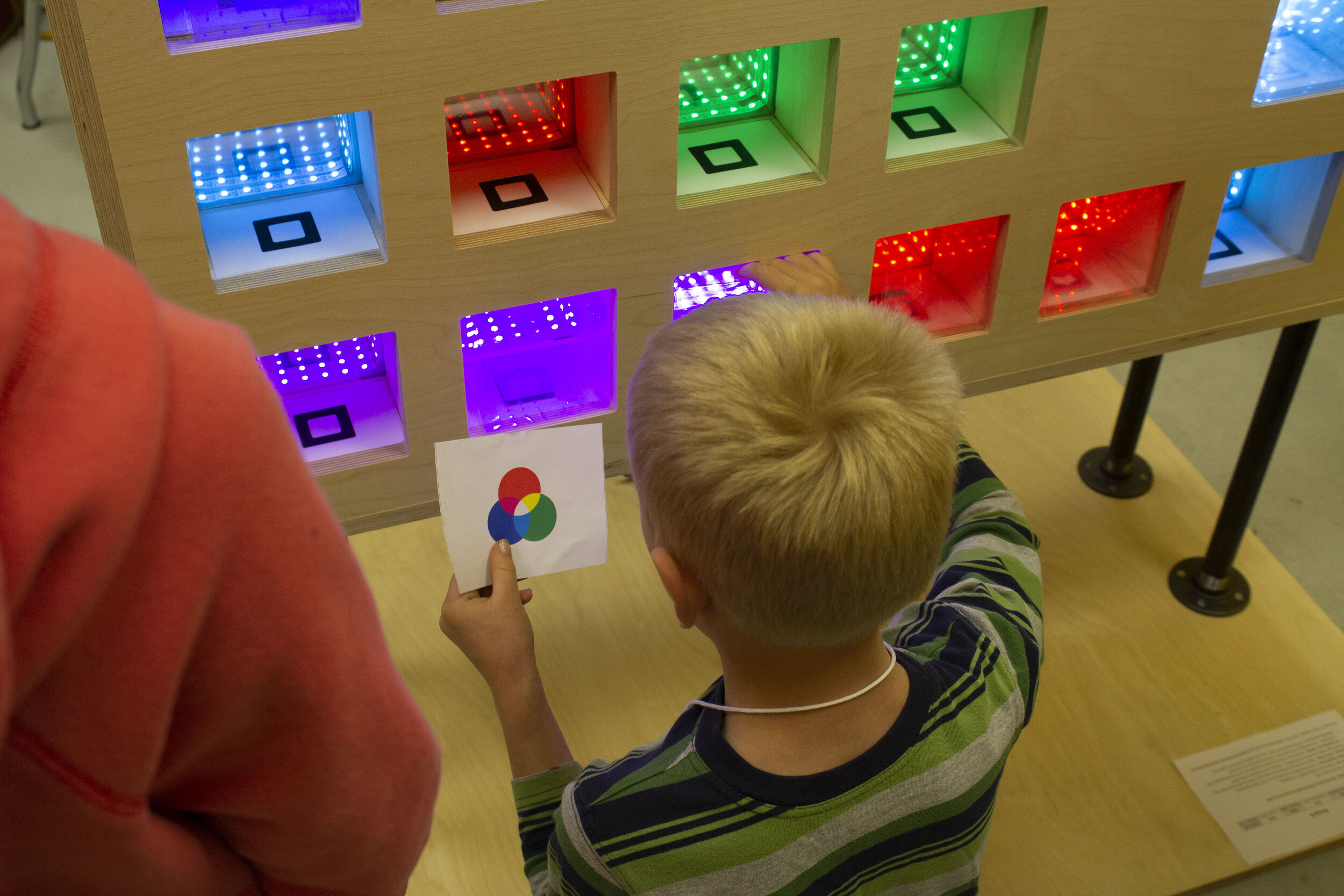
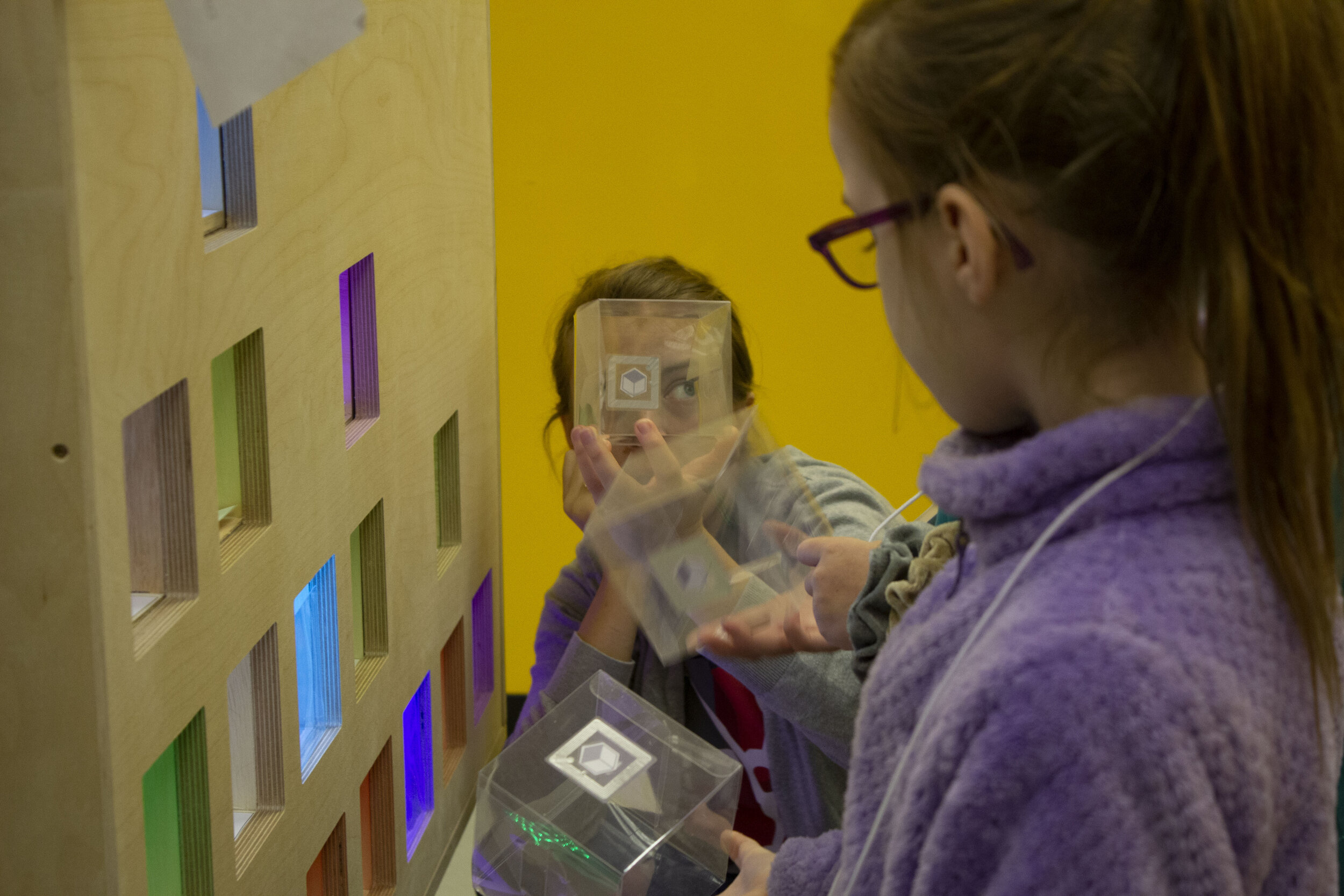
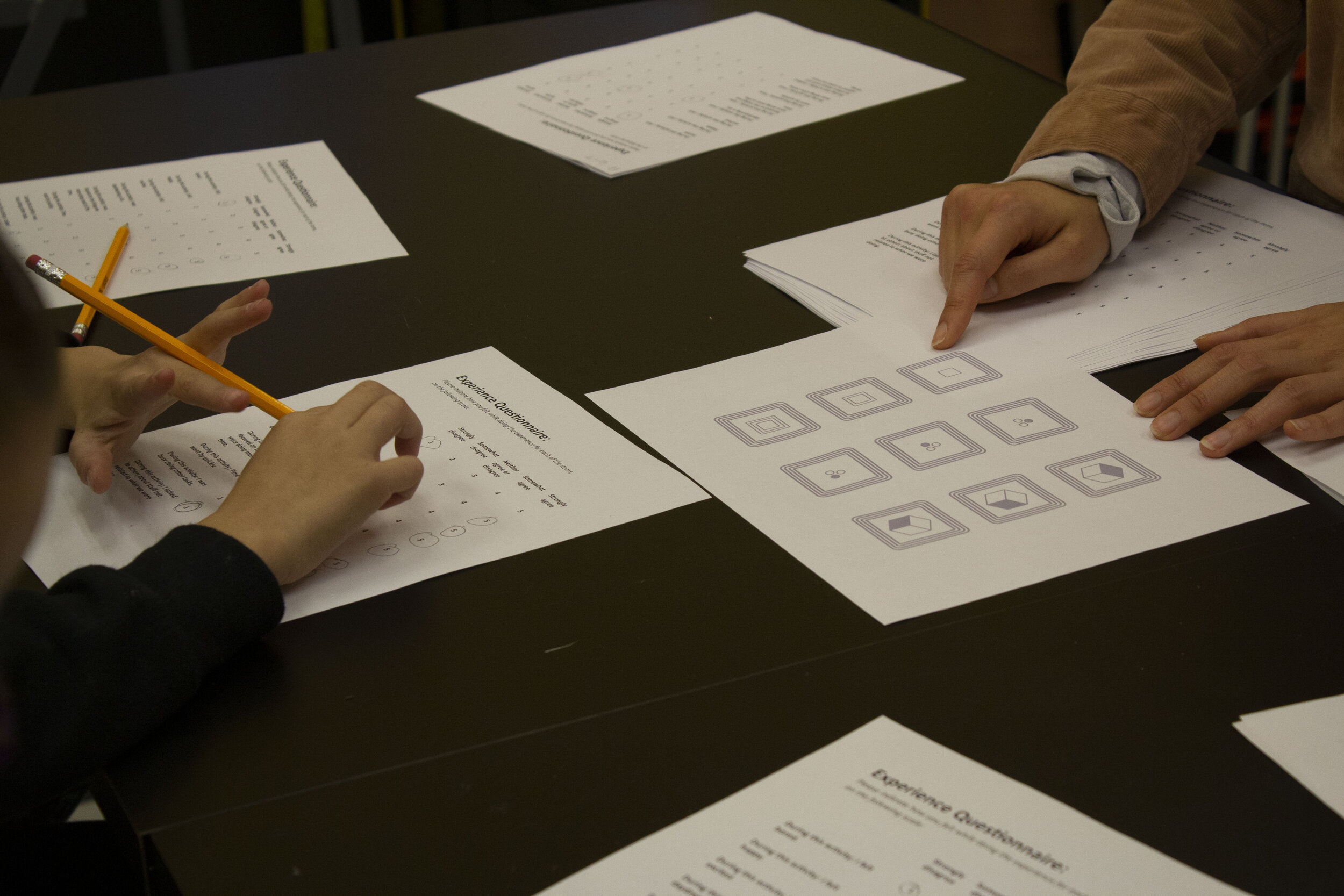
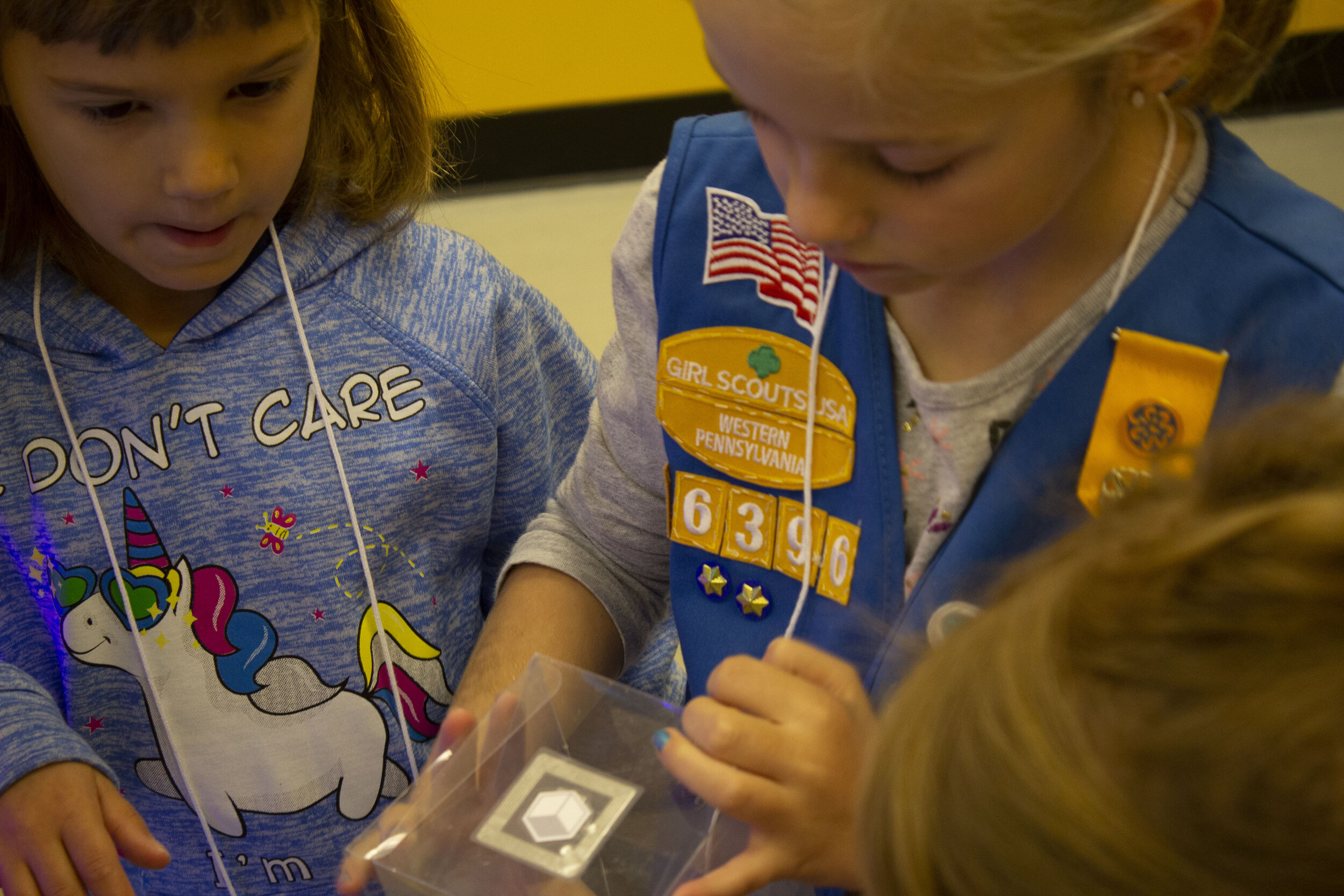
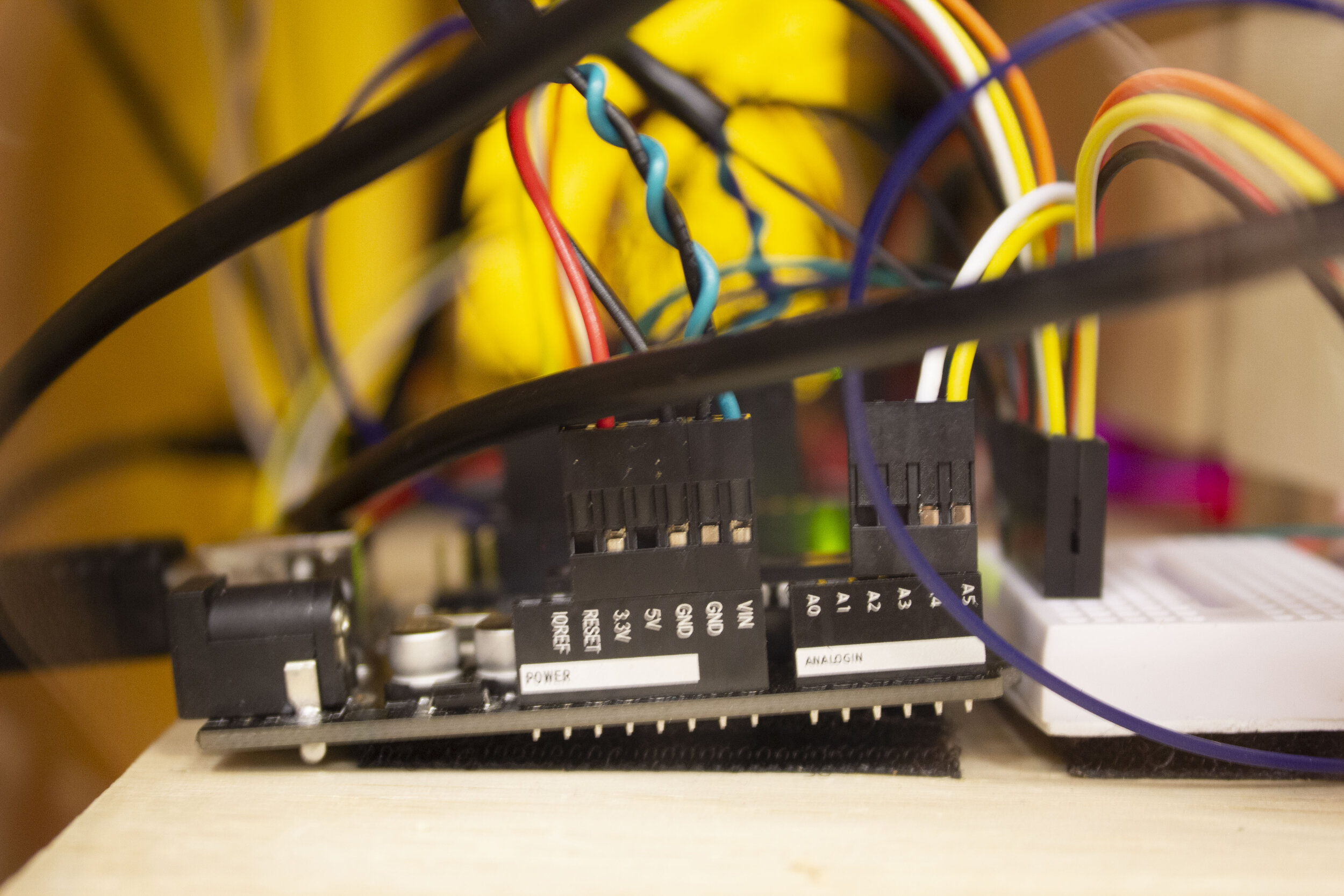
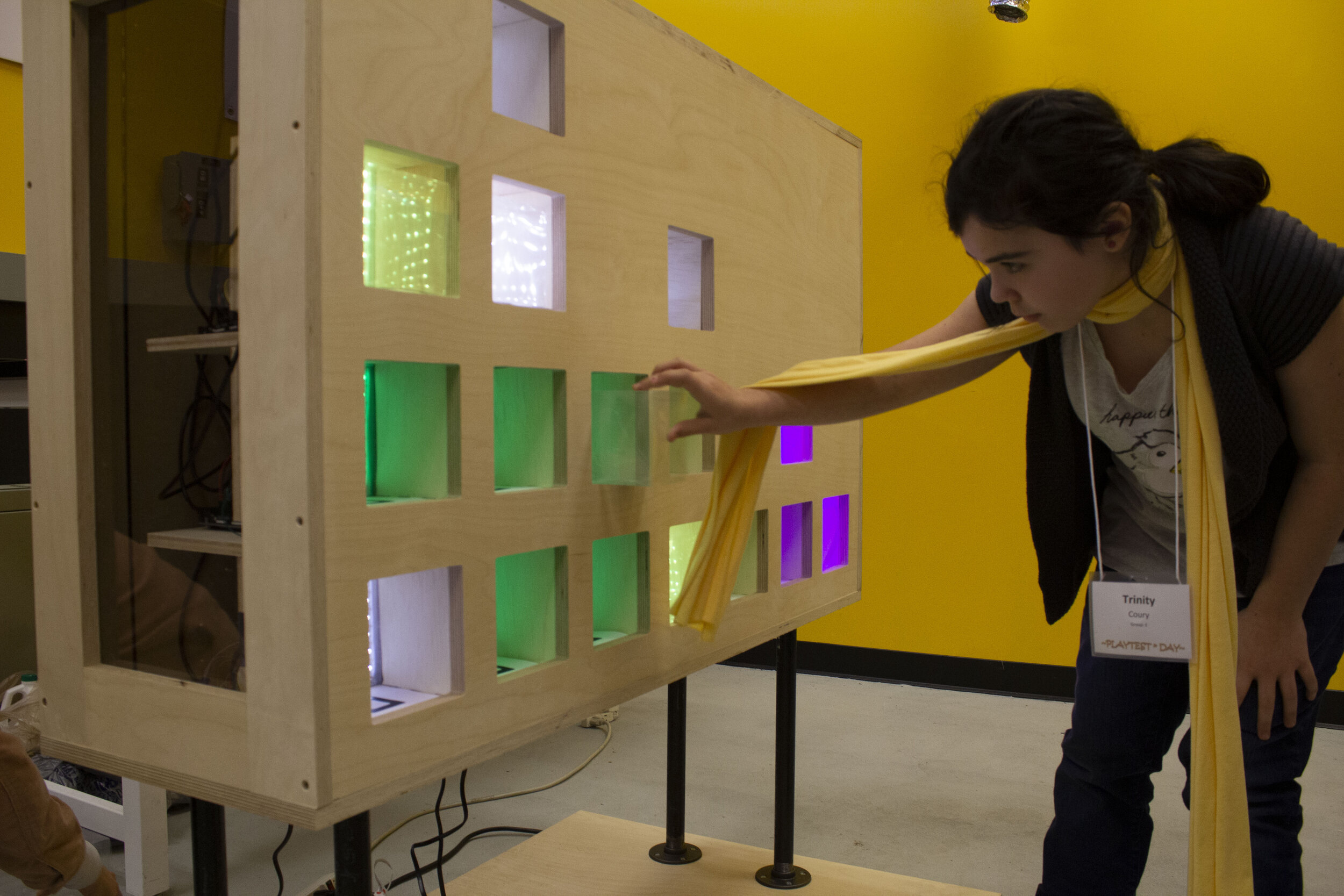
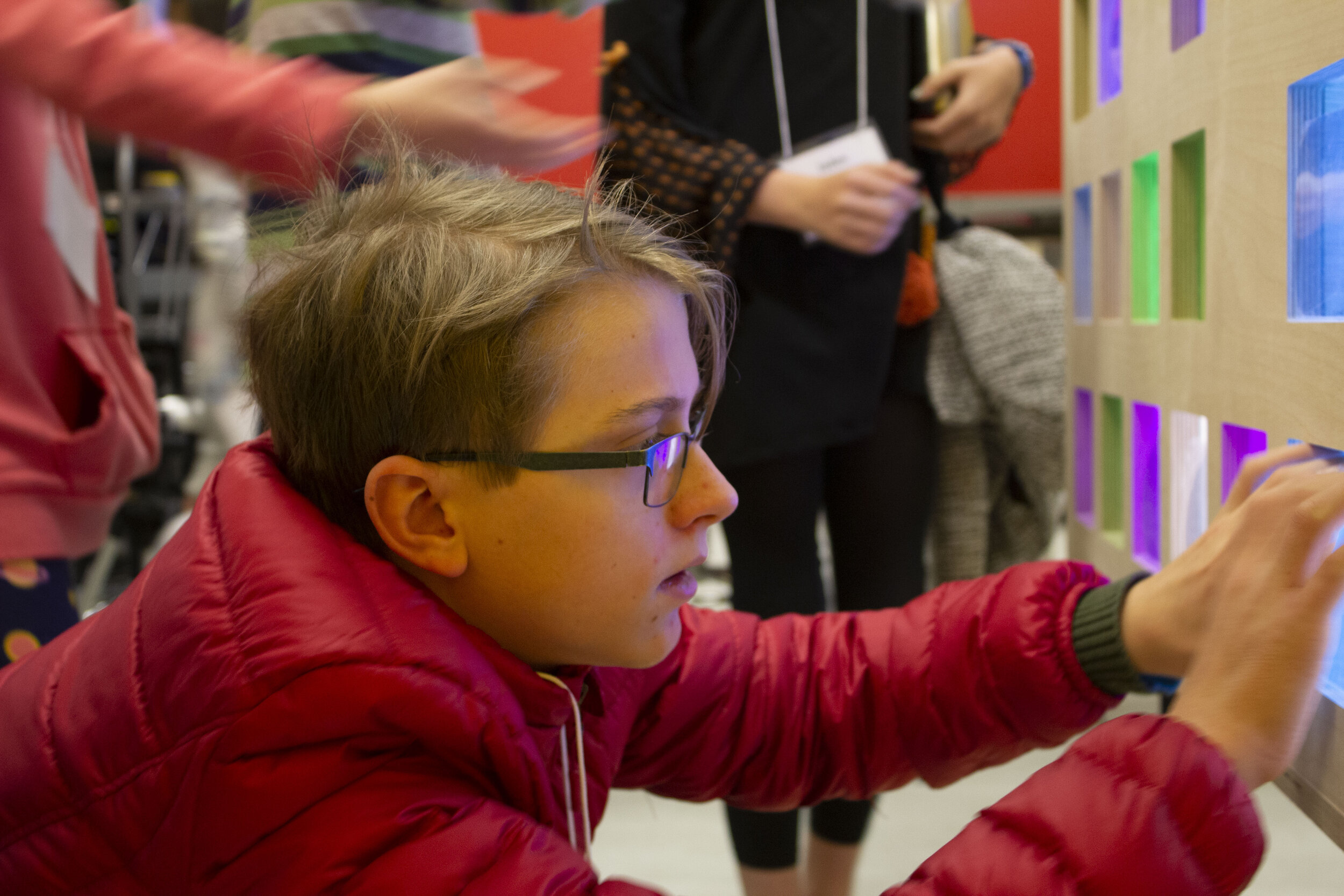

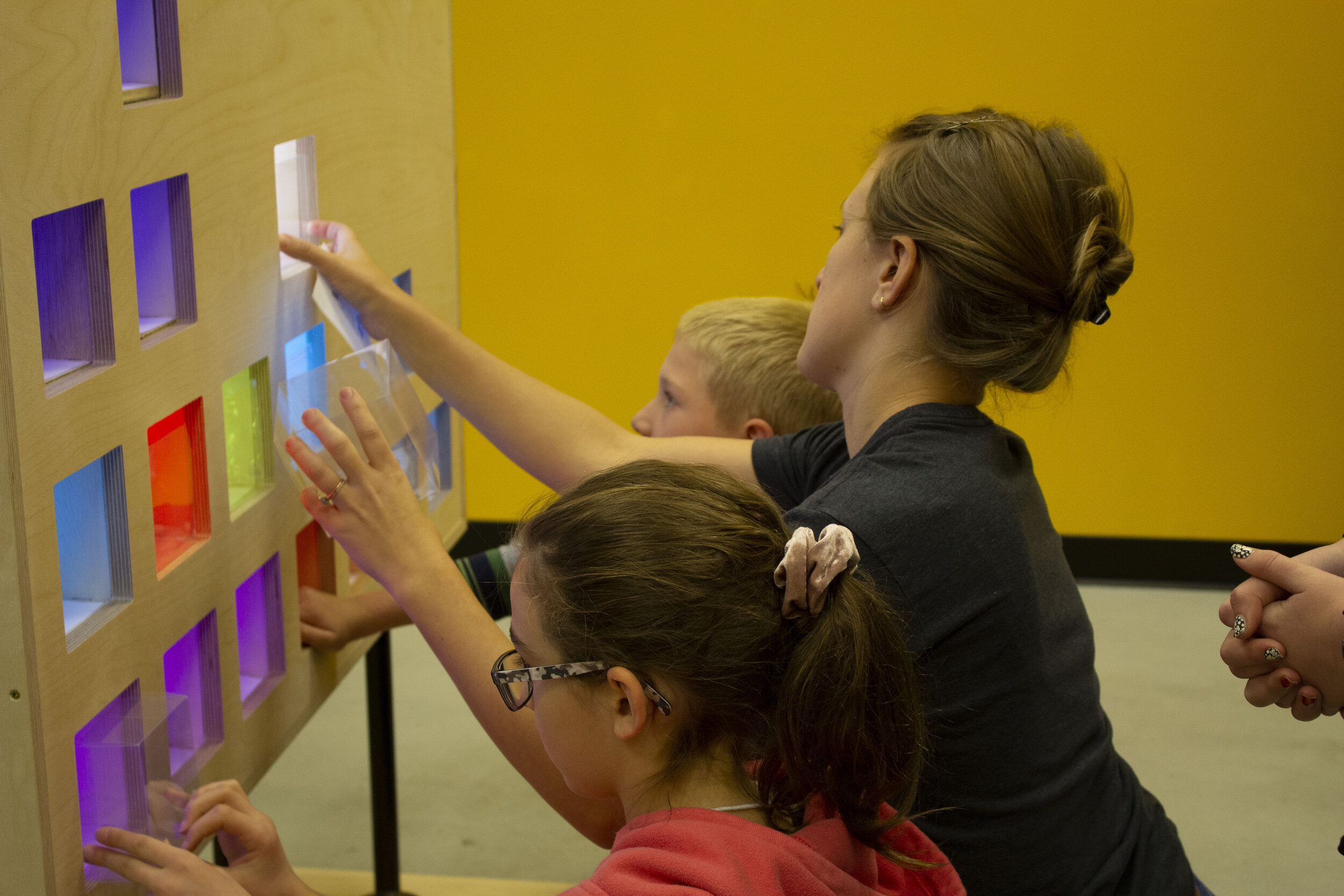
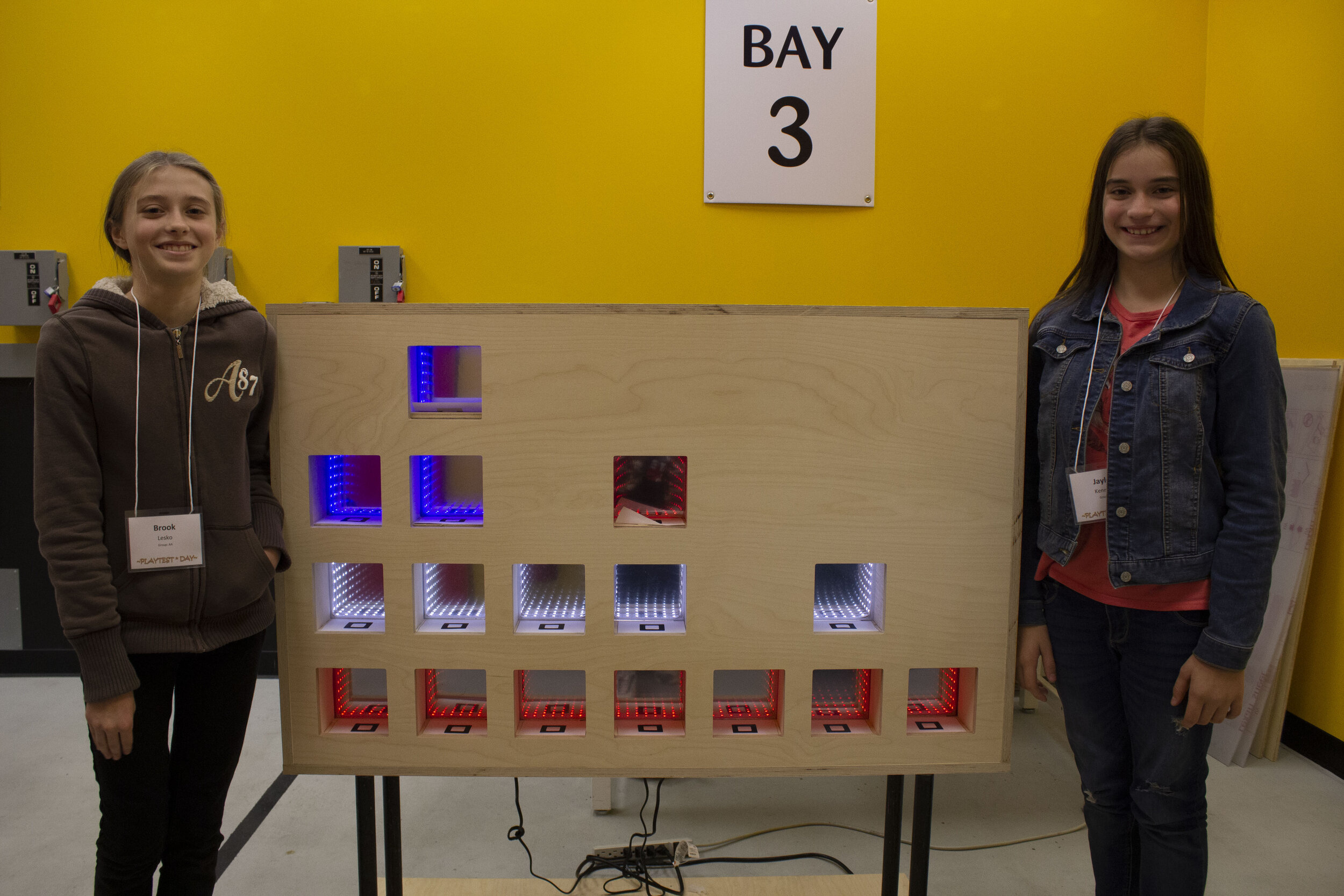
My Learnings
Teamwork makes the dream work.
Despite how difficult and time-consuming this project was, I had the most fun coming in everyday and working with THE best team. Not to brag…but we were told that we had the “best vibes” coming out of our room. Our deep respect for each other was integral to fostering a safe creative environment and fueling every late night/weekend spent working.
Servant leadership.
This is a skill set that I’ve personally struggled with in the past, but during this project I tried to serve my team’s needs as best as I could to make their jobs as easy as possible, which sometimes meant having to do the not so fun stuff. I felt that I was most successful as a leader, when my teammates were able to do their jobs most effectively and with joy.
Convincing people to let you do something that you don’t know how to do.
Pitching this project may have been my favorite part. I loved pulling together a team of passionate people to create a unified vision that supported all of our interests and skill sets. Also, I love a good deck.
Navigating bureaucracy.
Clear communication and setting of expectations with advisors was integral to creating advocates for our project. Also, talking to advisors who didn’t have a stake in our project provided us with unbiased advice to deal with difficult situations.
HANDLING NEGATIVE FEEDBACK.
Like all projects, negative feedback is always going to be difficult to receive. It was especially harder for this project, because it was our pitched idea. I had to learn how to distinguish my own self-worth and identity from the project by finding healthy outlets for dealing with negative emotions.
KeepING team morale up!
As a leader, I realized that my attitude and how I react to situations sets a precedent for the rest of the team. By coming in with a can-do attitude everyday, a smile on my face, and allowing time for jokes/off-topic conversations created a more positive atmosphere. As well, playing old-school Britney at full blast is a great motivator.
Advocating for design choices.
It was impossible to make design choices to appease all stakeholders. But at the end of the day, it was our project and we had to advocate for our own design choices. This ultimately came in the form of us advocating for the players of the experience.


